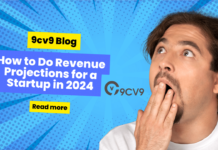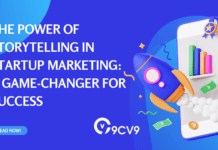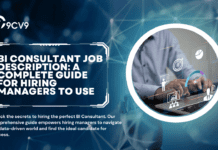Key Takeaways
- AI and automation are revolutionizing recruitment, reducing time-to-hire by up to 80% and enhancing candidate-job matching efficiency.
- Agencies must adapt to remote work and the gig economy, offering scalable solutions for global, flexible, and project-based talent needs.
- Specialization and DEI are critical to agency success, driving competitive advantage, expanding talent pools, and aligning with evolving client demands.
As we move deeper into 2025, the global recruitment industry stands at a pivotal crossroads, shaped by the convergence of disruptive technologies, seismic shifts in workforce expectations, and intensifying competition for top talent. Recruitment agencies are no longer functioning solely as talent matchmakers—they are evolving into strategic workforce advisors, data-driven consultants, and digital-first partners for organizations seeking long-term hiring success in an increasingly complex and volatile employment landscape. The state of recruitment agencies in 2025 is, therefore, best understood as a study in rapid adaptation, strategic innovation, and resilience amid multifaceted global labor market challenges.

From the impact of artificial intelligence and automation to the widespread adoption of remote work and flexible workforce models, recruitment firms are navigating profound industry-wide changes. The global staffing and recruitment market is on a steady growth trajectory, projected to reach over $650 billion in value by the end of 2025, supported by a compound annual growth rate (CAGR) of 5%. This resurgence comes on the heels of post-pandemic adjustments, economic recovery across major regions such as North America, Europe, and Asia-Pacific, and renewed corporate emphasis on building agile, cost-effective, and highly specialized teams.
Yet, this growth is accompanied by equally significant operational and strategic challenges. Talent shortages remain a major concern across nearly every sector, particularly in IT, healthcare, engineering, education, and green technologies. With Baby Boomers retiring in record numbers and Millennials and Gen Z workers demanding more autonomy, purpose, and digital enablement in their careers, agencies must now build recruitment processes that are not only efficient but also personalized and inclusive. Moreover, the growing dominance of the gig economy—expected to account for nearly 50% of the U.S. workforce by the close of 2025—has pushed recruitment firms to reimagine the way they source, vet, and manage contract, freelance, and hybrid talent pools.
Technological innovation has also become a defining factor in agency competitiveness. AI-powered applicant tracking systems, predictive talent intelligence, chatbots for candidate engagement, and advanced skills matching algorithms have revolutionized how top firms operate. Recruiters are leveraging automation to reduce administrative workloads, shorten time-to-hire cycles by up to 70%, and deliver better client outcomes. However, with these innovations come important ethical and compliance considerations, particularly surrounding bias mitigation, data privacy, and maintaining the human touch in recruitment experiences.
Geopolitical dynamics, economic volatility, and evolving regulatory environments also play a critical role in shaping the future of recruitment agencies in 2025. Wage inflation, remote workforce taxation, cross-border employment laws, and evolving DEI (Diversity, Equity, and Inclusion) expectations are placing new pressures on agencies to stay informed, flexible, and compliant across jurisdictions. Meanwhile, employer demands are shifting from purely filling roles to achieving workforce scalability, diversity goals, culture alignment, and measurable ROI on recruitment investments.
Internally, recruitment agencies are grappling with their own operational pressures. Recruiter burnout, shrinking team sizes, and increasing workloads have forced agency leaders to prioritize employee wellbeing, digital transformation, and operational efficiency. Forward-thinking agencies are investing in training, well-being support, and digital upskilling initiatives to protect talent from attrition while empowering them with tools to handle greater volumes of high-quality work.
In this climate, only the most agile, tech-enabled, and client-centric recruitment agencies will thrive. Specialization in high-growth verticals, such as clean energy, cyber security, biotech, and e-commerce, has become a critical differentiator. Likewise, the ability to provide flexible, value-driven hiring solutions across permanent, contract, and fractional workforce categories is now a minimum requirement rather than a competitive edge.
This comprehensive blog delves into the current and future state of recruitment agencies in 2025, exploring key market dynamics, technological disruptions, talent trends, operational challenges, and strategic imperatives that are reshaping the industry. Whether you’re a hiring manager, HR leader, recruiter, investor, or job seeker, this analysis provides essential insights into how recruitment firms are transforming to meet the needs of a digitally connected, talent-scarce, and results-oriented world of work.
Before we venture further into this article, we would like to share who we are and what we do.
About 9cv9
9cv9 is a business tech startup based in Singapore and Asia, with a strong presence all over the world.
With over nine years of startup and business experience, and being highly involved in connecting with thousands of companies and startups, the 9cv9 team has listed some important learning points in this overview of The State of Recruitment Agencies in 2025.
If your company needs recruitment and headhunting services to hire top-quality employees, you can use 9cv9 headhunting and recruitment services to hire top talents and candidates. Find out more here, or send over an email to [email protected].
Or just post 1 free job posting here at 9cv9 Hiring Portal in under 10 minutes.
The State of Recruitment Agencies in 2025: Key Statistics and Trends
- Executive Summary
- Overall Market Size and Growth Projections (2025-2033)
- Regional Market Dynamics
- Number of Recruitment Agencies and Market Concentration
- Market Segmentation and Performance by Service & Sector
- Temporary vs. Permanent Staffing: Market Share, Revenue Trends, and Shifting Preferences
- Executive Search Market: Size, Growth, and Leadership Demands
- IT & Technology Staffing: Market Value, Growth, and Specialized Skill Demand
- Healthcare & Life Sciences Staffing: Trends, Challenges, and Growth Areas
- Other Key Sectors
- Macroeconomic Environment and Labor Market Influences
- Transformative Trends and Their Impact
- The Expanding Gig Economy and Flexible Work Models
- The Pervasive Shift to Remote & Hybrid Work
- Skills-Based Hiring Frameworks
- Diversity, Equity, and Inclusion (DEI) Imperatives
- Financial and Operational Performance of Recruitment Agencies
- Trends, Transformations, and Strategic Priorities
1. Executive Summary
Overview and Market Outlook
- The global recruitment and staffing industry is undergoing a pivotal transformation in 2025, emerging from a turbulent post-pandemic period and entering a high-growth phase.
- Industry analysts project the global recruitment market value to climb to $650 billion by the end of 2025, marking a 5% year-over-year increase.
- This resurgence is attributed to:
- Stabilization in global macroeconomic conditions
- Intensified skills shortages across multiple sectors
- Structural changes in workforce composition and employment expectations
- The increasing impact of digital and AI-driven recruitment technologies
Growth Projections and Market Scale
| Year | Market Size (USD) | Growth Rate (CAGR) | Key Trends |
|---|---|---|---|
| 2024 | $619 billion (est.) | -0.3% (contraction) | Economic uncertainty, hiring slowdown |
| 2025 | $650 billion | +5% | AI adoption, remote work integration |
| 2030 | $924.29 billion | 7.56% | Gig economy expansion |
| 2033 | $2,292.24 billion | 13.1% | Deep automation, hyper-specialization |
Source: Industry projections from market research reports (2024–2033)
- The U.S. staffing market, the largest globally, is anticipated to rebound to $198.3 billion in 2025, after a notable downturn in 2024.
- Europe and Asia-Pacific are also experiencing renewed activity, driven by industrial recovery, regional reshoring strategies, and sectoral digitization.
Strategic Shifts Driving Industry Transformation
1. Technology Integration and AI-Enhanced Recruitment
- Artificial Intelligence is no longer optional but foundational in:
- Candidate sourcing and resume parsing
- Predictive talent analytics
- Automated screening and assessment
- AI tools are enabling faster time-to-hire, improved quality-of-hire, and better workforce planning.
- Agencies investing in natural language processing (NLP) and machine learning are outperforming traditional competitors.
2. Remote Work and Gig Economy Alignment
- The global workforce is demanding flexibility, autonomy, and remote-friendly work models.
- Staffing agencies must now:
- Support cross-border talent mobility
- Offer compliance-ready freelancer and contractor management
- Deliver tailored placement for hybrid and remote roles
| Talent Model | 2024 Adoption Rate | 2025 Forecasted Growth |
|---|---|---|
| Full-time on-site | 48% | ↓ 45% |
| Hybrid | 32% | ↑ 36% |
| Remote-only | 20% | ↑ 25% |
3. Human-Centered Candidate Experience
- Despite digital acceleration, candidate-centricity remains paramount:
- Empathetic communication
- Transparent hiring timelines
- Personalized onboarding experiences
- Agencies must balance automation with authentic human interaction to improve talent retention.
Key Success Factors for Recruitment Agencies in 2025
| Pillar | Strategic Imperatives |
|---|---|
| Agility and Adaptability | Pivoting rapidly to market shifts and sector-specific demands |
| Specialization | Deep focus on niche verticals (e.g., tech, healthcare, finance, green energy) |
| DEI Leadership | Integrating Diversity, Equity, and Inclusion as a core offering, not a checkbox |
| Regulatory Compliance | Navigating complex global labor laws, taxation, and remote hiring regulations |
| ROI Transparency | Providing measurable, data-backed outcomes to clients with cost-efficiency metrics |
Emerging Challenges in 2025
- Widening Skills Gap: Acute shortages in STEM, AI, cybersecurity, and clean energy sectors demand creative sourcing models.
- Regulatory Complexity: Varied tax, labor, and immigration rules are complicating international hiring efforts.
- Talent Mismatch: Despite increased job availability, misalignment persists between job requirements and applicant skills.
Conclusion and Outlook Beyond 2025
- The recruitment industry in 2025 is at an inflection point—marked by accelerated digitalization, shifting candidate expectations, and evolving client demands.
- Agencies that embrace innovation, champion inclusivity, and maintain operational agility will thrive.
- Long-term forecasts signal continued expansion, particularly in markets that invest in AI, DEI, and global talent mobility.
2. Overall Market Size and Growth Projections (2025-2033)
Global Staffing Market: Size, Trajectory, and Forward-Looking Insights (2025–2033)
- The international recruitment industry is entering a new growth cycle in 2025, following a period of stagnation and slight contraction across 2023 and 2024.
- According to aggregated data from multiple market analysts, the global staffing market is forecast to reach approximately USD 650 billion in 2025, reflecting a 5% annual growth rate.
- This rebound signals a critical turning point: the industry is transitioning from cyclical decline to structural reinvention, driven by key forces such as:
- Global macroeconomic recovery and corporate rehiring
- Persistent global skills shortages across specialized sectors
- Acceleration in the adoption of Artificial Intelligence (AI), automation, and workforce analytics
- The rise of remote and flexible workforces, enabling global talent access
- Increasing investor interest in HRTech platforms and recruitment process outsourcing (RPO) services
Divergence in Long-Term Market Forecasts
- Projections for market expansion over the next decade reveal significant variance, largely due to differences in research methodologies, future-of-work assumptions, and growth drivers factored into the models.
- The disparities point to three primary market outlooks:
Conservative Scenario: Slow-but-Steady Growth
- 2024 Base Value: USD 525.9 billion
- 2033 Target: USD 626.2 billion
- CAGR (2025–2033): Approx. 1.96%
- Drivers:
- Incremental adoption of AI and automation
- Cautious enterprise hiring practices
- Regulatory and compliance hurdles slowing scalability
Moderate Scenario: Balanced Expansion with Digital Leverage
- 2025 Base Value: USD 642.28 billion
- 2030 Target: USD 924.29 billion
- CAGR (2025–2030): 7.56%
- Drivers:
- Steady digital transformation
- Hybrid work normalization
- Investments in workforce reskilling and upskilling
Aggressive Scenario: Hyper-Growth and Market Disruption
- 2024 Base Value: USD 757 billion
- 2033 Target: USD 2292.24 billion
- CAGR (2025–2033): 13.1%
- Drivers:
- Explosive AI-driven matching platforms
- Global expansion of freelance and contract markets
- Large-scale enterprise outsourcing of talent acquisition
Implications of Forecast Variability for Recruitment Agencies
- These forecast disparities underscore the volatile and evolving nature of the global recruitment sector.
- Strategic planning for staffing firms in 2025 and beyond should:
- Build adaptability into forecasting models by planning across all three growth trajectories
- Invest in technology and innovation under any scenario to remain competitive
- Monitor key inflection points—e.g., regulatory changes, geopolitical stability, AI legislation, and demographic shifts
- Diversify regionally and functionally, especially by targeting high-growth verticals (tech, healthcare, green jobs)
Comparative Market Forecasts: Tabulated Overview
Table 1: Global & U.S. Recruitment Market Size Forecasts (2024–2033)
| Metric | 2024 (USD Bn) | 2025 (USD Bn) | 2026 (USD Bn) | 2030 (USD Bn) | 2033 (USD Bn) | CAGR (%) | Scenario Type |
|---|---|---|---|---|---|---|---|
| Global Market – Conservative | 525.9 | 536.3 | — | — | 626.2 | 1.96% (2025–2033) | Low-growth Baseline |
| Global Market – Moderate | — | 642.28 | — | 924.29 | — | 7.56% (2025–2030) | Balanced Growth Model |
| Global Market – Aggressive | 757 | 650* (alternate 2025 estimate) | — | — | 2292.24 | 13.1% (2025–2033) | High-Growth Disruption |
| U.S. Market (Average) | 189 | 188.7 / 198.3 / 198.7 / 189.9 (various) | 226.6 | — | — | 1%–5% (varied) | Mixed National Forecasts |
Note: Multiple figures represent alternate estimates from separate research sources. CAGR values are based on corresponding timeframe and scenario.
Regional Revenue Contributions (2025 Forecast)
| Region | Share of Global Revenue (2025) | Key Drivers |
|---|---|---|
| Americas | 35% | Tech sector hiring rebound, enterprise RPO adoption |
| EMEA | 40% | Recovery in manufacturing, public sector hiring, labor mobility |
| Asia-Pacific | 24% | Rapid industrialization, digital offshoring, emerging market growth |
3. Regional Market Dynamics
Global Revenue Distribution by Region: A Tri-Regional Power Structure
The global recruitment industry in 2025 continues to be concentrated within three dominant geographic regions, each representing distinct economic, demographic, and sectoral dynamics. The revenue contribution from these regions is as follows:
Global Staffing Revenue Share by Region (2025 Projection)
| Region | Share of Global Staffing Revenue (%) | Strategic Implications |
|---|---|---|
| EMEA (Europe, Middle East, Africa) | 40% | Strong demand across cross-border mobility, IT contracting, and multilingual BPO services |
| The Americas | 35% | Driven by corporate hiring recovery and healthcare staffing expansion |
| Asia-Pacific (APAC) | 24% | Powered by digital transformation, tech sector hiring, and large-scale offshoring |
Insight: The tri-regional dominance underscores the varying maturity levels of labor markets, policy frameworks, and technology adoption rates across continents.
The Americas: Market Recovery Anchored by U.S. Leadership
United States: The Cornerstone of Recruitment in the Western Hemisphere
- The U.S. remains the largest contributor to recruitment revenue within the Americas, accounting for a commanding 91% of the region’s total staffing market value.
- The 2025 U.S. staffing industry value is forecasted to range between $188.7 billion to $198.7 billion, with multiple growth scenarios in consideration:
- Baseline recovery: A 5% rebound from the 2024 contraction, rising from $189 billion to $198.3 billion
- Moderate trajectory: A 1% annual growth, reaching $188.7 billion
- Optimistic scenario: A 3% growth, increasing to $189.9 billion
Table: U.S. Staffing Industry – Performance Indicators (2024–2025)
| Metric | 2024 Value | 2025 Forecast (Range) | Growth Range (YoY) | Comments |
|---|---|---|---|---|
| Total Market Size (USD Billion) | $189.0 | $188.7 – $198.7 | -0.1% to +5% | Varies by forecast model and macroeconomic assumptions |
| GDP Growth | ~2.0% | 1.8% – 2.2% | Positive | Indicates stable economic recovery trajectory |
| Interest Rate Trend | Elevated, stabilizing | Plateau expected | Neutral impact | Supports employer confidence and hiring momentum |
| Corporate Hiring Sentiment | Moderate in 2024 | Improving in 2025 | Positive shift | Hiring demand set to rise, especially in tech & healthcare |
Key Takeaways for Recruitment Firms in the U.S.
- The 2024 downturn appears to be cyclical rather than structural, attributed to broader economic uncertainty and short-term hiring freezes.
- 2025 is positioned as a recovery year, with firms resuming workforce expansion across multiple verticals.
- Strategic imperatives for agencies:
- Optimize cost structures and digitize workflows to improve placement velocity
- Leverage predictive hiring tools to anticipate demand surges
- Expand service offerings in high-growth sectors (e.g., IT, life sciences, green energy)
North America: Sector-Specific Dominance in Healthcare Staffing
Temporary Healthcare Staffing Market Outlook (North America)
- North America is projected to retain its leadership in the global temporary healthcare staffing sector, commanding a market share of 43.70% in 2025.
- This strength is driven by:
- Aging population and rising chronic care needs
- Post-pandemic surges in healthcare system demand
- Critical nurse and allied health professional shortages
- Institutional preference for temp and contract models for staffing flexibility
Chart: Global Healthcare Staffing Share by Region (2025)
North America ██████████████████████████████ 43.7%
Europe █████████████████████ 29.1%
Asia-Pacific ██████████████ 17.3%
Others █████ 9.9%
Implication: U.S.-based and Canadian recruitment firms with healthcare vertical specialization are uniquely positioned to capitalize on both volume and premium pricing opportunities.
EMEA: The Largest Regional Contributor to Global Staffing Revenue
- EMEA is forecasted to account for 40% of global staffing revenues in 2025, reflecting sustained hiring activity across both mature and emerging labor markets.
- Key growth drivers:
- Large-scale government digitization initiatives
- Cross-border labor mobility, especially within the EU
- High demand for IT, fintech, and multilingual support roles
- Markets such as Germany, France, the UAE, and South Africa are expected to outperform regional averages, driven by sectoral investment and talent migration trends.
APAC: Fast-Moving but Fragmented Growth
- The Asia-Pacific region, while contributing 24% of global staffing revenues, demonstrates accelerated growth in digital hiring, IT services, and offshore process outsourcing.
- Top-performing countries:
- India: Talent outsourcing hub for software engineering and customer support
- Japan: Aging workforce and automation-centered hiring
- Vietnam & Philippines: Rising stars in offshore BPO and tech recruitment
- APAC agencies are advised to invest in cross-border compliance, language-localized platforms, and AI-enhanced applicant tracking systems to remain competitive.
4. Number of Recruitment Agencies and Market Concentration
Fragmented Yet Concentrated: The Paradox of the Staffing Industry Structure
The global recruitment industry in 2025 exhibits a complex structure that blends fragmentation at the operational level with substantial consolidation of market power among top-tier players. This dichotomy reflects both the vast number of active recruitment firms and the disproportionate market influence wielded by a small group of multinational agencies.
United States: Volume-Rich but Influence-Skewed
Key Structural Metrics
- The U.S. staffing and recruitment sector continues to be one of the most densely populated markets globally.
- Total Number of Agencies: Approximately 26,000 firms operate across the U.S.
- 57% of these agencies specialize in temporary and contract staffing, reflecting widespread demand for labor flexibility and agile workforce solutions.
- Despite the extensive number of firms, market influence remains concentrated, with large, multi-location operators holding significant revenue shares.
Implications for the U.S. Market
- Market Fragmentation at the Base:
- Thousands of small and medium-sized firms operate regionally or within niche sectors (e.g., healthcare, IT, logistics).
- Competition at this tier is intense, with success dependent on hyper-specialization and client loyalty.
- Concentration at the Apex:
- A handful of firms drive a significant portion of market activity, setting pricing norms, service standards, and digital innovation benchmarks.
Global Concentration Dynamics: Medium Overall, High in Key Segments
Top Markets by Revenue Share
- In 2024, 17 countries with annual staffing revenues exceeding USD 6 billion contributed a combined 89% of global recruitment industry revenue.
- Notably:
- 11 out of these 17 countries are located within the EMEA region.
- The United States, Japan, and the United Kingdom alone account for over 50% of global staffing revenues.
Table: Global Staffing Revenue Concentration (2024–2025)
| Region/Country | # of Countries > $6B Revenue | Share of Global Revenue (%) | Key Observations |
|---|---|---|---|
| EMEA | 11 | ~40% | Most diverse region in terms of country-level contributors |
| United States | 1 | ~30% | Largest national market |
| Japan & United Kingdom | 2 | ~20% | High maturity and technology integration |
| Rest of World | 3 | ~11% | Includes Canada, Australia, Brazil |
| Total (17 countries) | — | 89% | Revenue centralized in a few advanced economies |
Key Industry Players: National and Global Giants
Dominance in Niche Segments (Industrial Staffing – U.S.)
| Top U.S. Industrial Staffing Firms (2025) | Market Focus | Positioning |
|---|---|---|
| Employbridge | Manufacturing, logistics | Volume-based staffing leader |
| Aerotek | Engineering, skilled trades | Technical and skilled niche expertise |
| Express Employment Professionals | Light industrial and clerical | Large franchise-based operations |
| Randstad USA | Cross-sector industrial staffing | Global scalability, local reach |
| TrueBlue | Industrial, on-demand labor | Tech-enabled workforce platforms |
Global Market Leaders
| Global Firms | HQ Region | Global Reach | Specialization |
|---|---|---|---|
| Adecco Group | Switzerland | 60+ countries | Workforce solutions, HR consulting |
| Randstad | Netherlands | 39 countries | End-to-end staffing and outsourcing |
| ManpowerGroup | U.S. | 75+ countries | Talent solutions, workforce transformation |
Insight: These firms not only hold dominant positions but also set technological benchmarks, leveraging AI, predictive analytics, and RPA to streamline candidate sourcing, vetting, and client matching.
Strategic Outlook for Smaller and Emerging Agencies
Success Pathways in a Dual-Structured Market
- Niche Specialization:
- Focus on underserved or skill-short sectors (e.g., green energy, AI/ML, cybersecurity).
- Cultivate deep domain knowledge and talent networks.
- Technology Integration:
- Invest in Applicant Tracking Systems (ATS), AI-powered sourcing tools, and candidate experience platforms.
- Use automation to reduce overhead and increase placement speed.
- Customized Client Engagement:
- Offer flexible pricing, curated talent pools, and industry-specific onboarding services.
- Build long-term partnerships by offering value beyond basic placement.
- Brand Positioning and Agility:
- Differentiate through cultural fit, DEI initiatives, and rapid adaptability to market trends.
Visual: Recruitment Market Structure Pyramid (2025)
┌────────────────────────────────────┐
│ Top 5 Global Firms (Hold ~20%+) │ ← High Influence, High Tech
└────────────────────────────────────┘
┌────────────────────────────┐
│ Top 50 Regional Agencies │ ← Mid-Tier Consolidators
└────────────────────────────┘
┌────────────────────┐
│ 26,000+ Small Firms│ ← Fragmented Base
└────────────────────┘
5. Market Segmentation and Performance by Service & Sector
A. Temporary vs. Permanent Staffing: Market Share, Revenue Trends, and Shifting Preferences
The global recruitment industry in 2025 exhibits a complex, dual-structured demand profile, marked by contrasting preferences for temporary and permanent employment solutions. These divergent trends are shaped by economic volatility, sector-specific labor demands, and evolving workforce strategies. Understanding this segmentation is essential for recruitment agencies aiming to position themselves effectively within a competitive and transformative market landscape.
Temporary vs. Permanent Staffing: Comparative Market Share and Revenue Insights
Temporary Staffing: Continued Dominance Driven by Flexibility and Cost Containment
- Global Market Share:
- Temporary and contract staffing accounts for approximately 38.7% of total recruiting market revenues in 2024, maintaining dominance in service-based segmentation.
- U.S. Market Snapshot:
- An estimated 57% of U.S. staffing agencies primarily operate within the temporary and contract staffing domain.
- This indicates an entrenched preference for contingent workforce models amid shifting economic and employment trends.
- Employer Behavior Trends:
- In 2024, around 64% of employers reported plans to increase their reliance on contract professionals, a signal of continued confidence in short-term, project-based hiring.
- This aligns with broader goals such as:
- Workforce scalability
- Mitigation of long-term hiring risks
- Operational cost reduction
Permanent Staffing: Preferred for Core Roles Amid Rising Skill Shortages
- Strategic Preference Shift:
- Despite the numerical strength of temporary hires, certain sectors—notably healthcare and advanced manufacturing—are increasingly prioritizing permanent hires.
- The rationale includes:
- Retention of critical talent
- Reduction in long-term contract premium costs
- Institutional knowledge continuity
- Cost Considerations:
- As contract rates inflate in high-demand sectors, employers are recalibrating their strategies to include more permanent hiring pipelines to stabilize workforce-related expenditure over time.
Key Industry Tensions: Flexibility vs. Stability in 2025 Hiring Models
The coexistence of rising contract worker utilization and a parallel resurgence in permanent staffing presents a strategic dichotomy. Businesses must now navigate this duality to meet both immediate needs and long-term talent sustainability.
| Strategic Consideration | Temporary Staffing Advantage | Permanent Staffing Advantage |
|---|---|---|
| Cost Flexibility | Lower upfront costs; no long-term benefits burden | Long-term savings for critical, stable roles |
| Speed & Agility | Fast onboarding for urgent needs | Slower, but more deliberate and lasting placements |
| Retention & Culture Integration | Limited engagement or loyalty | Higher retention and cultural alignment |
| Scalability for Projects | Easy to scale up/down | Difficult to adjust quickly |
| Strategic Talent Planning | Tactical, short-term focus | Strategic, long-term development |
Recruitment Agency Imperatives: Strategic Duality in Service Offerings
To remain competitive in 2025 and beyond, recruitment firms must bridge the divide between agility and permanence. The market no longer rewards specialization in a single staffing model; success now demands operational and service model versatility.
- Strategic Recommendations for Recruitment Agencies:
- Diversify service offerings to include both temporary/contract and permanent recruitment services.
- Build consultative relationships with clients to recommend optimal workforce models tailored to sector-specific and business cycle conditions.
- Invest in AI-powered talent matching platforms to increase speed and accuracy across placement types.
- Segment teams internally to handle different recruitment functions—specialized temporary placement teams and strategic permanent hiring consultants.
- Develop sector-specific expertise, especially in areas like:
- Healthcare
- IT and Cybersecurity
- Logistics and Warehousing
- Engineering and Technical Services
Future Outlook: Adaptive Staffing as the Gold Standard
Recruitment in 2025 is no longer a binary choice between temp and perm; it is an adaptive, hybrid strategy that demands agile execution. Firms capable of providing scalable staffing solutions across this spectrum—while emphasizing talent quality, speed, and alignment—are expected to outperform their peers.
Conclusion: Market Segmentation as a Lever for Strategic Differentiation
The 2025 recruitment landscape is defined by its complexity and responsiveness to economic uncertainty. Agencies that embrace a flexible service model and invest in technology, workforce analytics, and sector specialization will not only survive—but thrive—in a world where the value of strategic workforce solutions is paramount.
B. Executive Search Market: Size, Growth, and Leadership Demands
The global executive search landscape is undergoing a significant transformation in 2025, shaped by shifting organizational needs, advanced technologies, and the evolving definition of leadership in a volatile and complex business environment. The market for executive recruitment is not only expanding in size but also evolving in function and expectations.
1. Market Size and Growth Outlook
- Global Executive Search Market Size (USD) YearMarket Size (USD Million)Growth Indicator2025246.33–2033 (proj.)386.75↑ CAGR: 5.14%
- Key Growth Metric:
- Compound Annual Growth Rate (CAGR) from 2025–2033: 5.14%
- Retained executive search, which represents the high-touch, exclusive approach to hiring senior executives, is expected to grow by 5% annually.
- Regional Drivers:
- North America and Western Europe continue to lead in demand for executive leadership services.
- Asia-Pacific markets are rapidly adopting executive search services due to rising corporate expansions and globalization of local firms.
2. Strategic Market Trends in Executive Search (2025)
The executive recruitment sector in 2025 is no longer defined solely by seniority or tenure. Instead, it prioritizes agility, skills, and strategic alignment. The following market trends are shaping its evolution:
- Skills-Based Hiring Becomes Normative:
- Companies increasingly focus on demonstrable leadership competencies rather than legacy credentials or years of experience.
- Core skills in demand include:
- Digital transformation leadership
- Enterprise change management
- AI strategy formulation
- Environmental, Social, and Governance (ESG) oversight
- Fractional and Interim Leadership Models Gain Momentum:
- Fractional executives (CFOs, CHROs, CTOs on a part-time or project basis) are increasingly sought for short-term strategic interventions.
- Provides cost-effective leadership solutions for startups, scaleups, and transformation projects.
- Adoption of AI and Predictive Analytics:
- Search firms are deploying AI algorithms, psychometric assessments, and predictive modeling to better match leadership candidates to organizational cultures and strategic priorities.
- Automation is used for shortlisting and data enrichment, while human expertise remains central to final decision-making.
- Remote-Ready Leadership:
- With the rise of hybrid and distributed workforces, organizations now prioritize leaders who can effectively manage virtual teams and drive culture across time zones.
- DEI as a Core Search Mandate:
- Executive search mandates increasingly embed Diversity, Equity, and Inclusion (DEI) KPIs.
- Boards are requesting balanced shortlists and inclusive hiring frameworks that align with broader ESG mandates.
3. Executive Role Transformation: Evolving Demands
| Traditional Expectation | 2025 Expectation |
|---|---|
| Long-term corporate tenure | Agile, impact-driven engagements (e.g., interim) |
| Ivy League credentials | Proven strategic execution & leadership agility |
| In-office leadership | Competence in leading hybrid/remote teams |
| Generalist leadership | Specialized expertise (e.g., AI, ESG, M&A) |
4. Implications for Executive Search Firms
To thrive in this evolving terrain, executive search agencies must realign their core value propositions and service offerings. Key strategic shifts include:
- Advanced Assessment Methodologies:
- Moving beyond resume screening to include:
- Behavioral and situational judgment assessments
- Skills benchmarking tools
- Leadership simulation exercises
- Moving beyond resume screening to include:
- Consultative Talent Advisory Services:
- Executive search firms are becoming strategic advisors, offering:
- Organizational design consulting
- Leadership succession planning
- Board composition advisory
- Interim or fractional leadership sourcing
- Executive search firms are becoming strategic advisors, offering:
- Technology-Enabled Search Efficiency:
- AI-powered platforms, integrated CRMs, and data-driven dashboards improve both time-to-hire and quality-of-hire metrics.
- Globalization of Talent Pools:
- Executive talent is increasingly sourced from international markets, demanding firms with cross-border sourcing capabilities, language fluency, and cultural alignment expertise.
5. Executive Search Agency Competitive Matrix (2025)
| Capability Area | Leading Firms Offer (✓) | Emerging Firm Must-Have (✓) |
|---|---|---|
| Skills-Based Hiring | ✓ | ✓ |
| DEI-Compliant Sourcing | ✓ | ✓ |
| AI-Driven Candidate Matching | ✓ | ✓ |
| Interim Leadership Pools | ✓ | ✓ |
| Global Talent Reach | ✓ | Optional |
Conclusion: The Executive Search Market’s Strategic Role in 2025
In 2025, executive search is not merely about filling vacancies at the top—it is an integral part of organizational transformation. As leadership becomes increasingly agile, cross-functional, and impact-driven, executive search firms must evolve from talent finders into transformation enablers. Those that blend technological sophistication, strategic insight, and human-centered assessments will be well-positioned to lead in the decade ahead.
C. IT & Technology Staffing: Market Value, Growth, and Specialized Skill Demand
The IT and technology staffing sector continues to assert its strategic dominance within the global recruitment industry, driven by accelerating digitalization and escalating demands for specialized technical expertise. In 2025, the global IT recruitment market is positioned at a critical inflection point—balancing a temporary market deceleration with long-term structural growth.
Global Market Overview and Forecast
- Current Market Valuation:
- In 2024, the IT staffing market was valued at USD 184.64 billion.
- Projected to reach USD 198.8 billion in 2025, despite minor contractions.
- Long-term forecasts suggest expansion to USD 359.06 billion by 2033, registering a CAGR of 7.67% from 2025–2033.
- Share of Global Recruitment Market:
- Accounted for 29.60% of the overall recruiting market in 2024, signifying its integral role.
- U.S. Market Specifics:
- Valued at USD 41.5 billion in 2023.
- Projected to grow to approximately USD 46.2 billion by 2025 (assuming 7% growth).
- The U.S. Bureau of Labor Statistics projects a 15% increase in IT employment from 2022 to 2032, exceeding the average across all occupations.
Growth Trends and Market Dynamics
- Short-Term Volatility:
- 2024 witnessed an estimated 7% contraction, driven by:
- Economic slowdowns.
- Hiring freezes in large tech firms.
- Budget reallocations in digital departments.
- 2024 witnessed an estimated 7% contraction, driven by:
- Resilient Rebound in 2025:
- A 5% recovery is forecasted, reinforcing confidence in the sector’s long-term fundamentals.
- Growth to be led by demand in enterprise digital transformation and government tech initiatives.
- Key Drivers of Demand:
- Cloud computing, AI/ML integration, cybersecurity advancements, and digital infrastructure modernization.
- An urgent need for specialized roles such as:
- Cloud Engineers.
- AI Developers and Data Scientists.
- Cybersecurity Analysts.
- DevOps Engineers.
- IT Architects.
Strategic Imperatives for IT Recruitment Agencies
Recruitment agencies focused on technology must adopt agile, forward-thinking strategies to stay competitive in a fast-evolving digital landscape.
- Emerging Priorities:
- Tech Talent Mapping:
- Proactive identification of niche skills (e.g., generative AI, blockchain security).
- Upskilling Talent Pools:
- Collaborating with learning platforms to support ongoing candidate development.
- Advanced Sourcing Technologies:
- AI-powered screening tools and predictive analytics for better hiring precision.
- Tech Talent Mapping:
- Value-Added Services:
- Employer branding and candidate experience optimization.
- Consultation on tech workforce planning and hybrid workforce structuring.
- Resilience Through Diversification:
- Agencies must not over-rely on Big Tech demand alone.
- Expanding client portfolios to include:
- Healthcare IT.
- Fintech and digital banking.
- Government IT modernization projects.
- eCommerce and logistics tech systems.
Market Comparison Table: Key IT Recruitment Indicators (2023–2033)
| Metric | 2023 | 2024 | 2025 (Forecast) | 2033 (Forecast) |
|---|---|---|---|---|
| Global IT Staffing Market (USD) | $173.2 billion | $184.64 billion | $198.8 billion | $359.06 billion |
| Share of Global Recruiting Market | 27.4% | 29.6% | 31.2% (Est.) | ~35% (Est.) |
| U.S. IT Staffing Market (USD) | $41.5 billion | ~$43.6 billion | $46.2 billion | ~$75 billion (Est.) |
| Employment Growth in IT (US) | – | – | +15% (2022–2032) | – |
| Notable Sector Growth Areas | Cloud, AI, Cybersecurity, DevOps | – | – | – |
Conclusion: Outlook for 2025 and Beyond
- The global IT and technology staffing sector is poised for accelerated growth despite recent headwinds.
- Long-term expansion will be underpinned by global digital transformation imperatives.
- Recruitment agencies must be proactive in curating tech talent ecosystems, enhancing tech fluency, and leveraging recruitment automation.
- Those that can combine specialized knowledge, speed-to-market, and strategic advisory services will lead the charge in the next generation of tech staffing.
D. Healthcare & Life Sciences Staffing: Trends, Challenges, and Growth Areas
The healthcare staffing sector is undergoing a dynamic transformation, driven by shifting workforce needs, cost pressures, and evolving models of care delivery. In 2025, robust growth is anticipated across various segments of healthcare and life sciences staffing, though nuanced by significant internal shifts within the temporary workforce.
1. Market Valuation and Growth Projections
Global & U.S. Market Forecasts
- Global Healthcare Staffing Market:
- 2025 Projection: USD 44.97 billion
- 2034 Projection: USD 82.47 billion
- Compound Annual Growth Rate (CAGR): 5.39%
- U.S. Healthcare Staffing Market:
- 2025 Projection: USD 21.59 billion
- 2034 Projection: USD 40.16 billion
- CAGR: 5.71%
- Broader Healthcare & Life Sciences Sector:
- Forecast to expand at a CAGR of 9.15% between 2025 and 2030
Regional Segmentation in Temporary Healthcare Staffing
- North America:
- Expected to lead with a 43.70% share in temporary healthcare staffing in 2025
- Asia Pacific:
- Anticipated as the second-largest market with 25.2% of the share
2. Sectoral Trends and Internal Shifts
A. Decline in Temporary Travel Nursing
- Key Observations:
- Temporary Staffing Decline:
- A 19% reduction in overall healthcare temporary staffing
- Travel nurse demand specifically decreases by 30%
- Primary Drivers:
- Escalating operational costs
- Healthcare providers’ preference for a more stable and permanent workforce
- Temporary Staffing Decline:
B. Growth in Specialized Temporary Staffing
- Locum Tenens Staffing:
- Projected to grow by 12%, addressing short-term gaps in specialist care
- Physician Staffing:
- Expected to dominate temporary staffing segments with a 41.1% market share in 2025
3. Strategic Implications for Recruitment Agencies
- Diversification of Service Offerings:
- Agencies must distinguish between various healthcare staffing segments, tailoring services to meet highly specialized and permanent placement needs.
- Advisory Capabilities:
- Advising hospitals and clinics on optimal workforce configurations that balance short-term flexibility with long-term stability.
- Understanding Client Needs:
- A nuanced grasp of hospital and clinical requirements is essential for matching the right candidates to the right roles, whether for temporary, locum tenens, or permanent placements.
- Enhanced Capabilities:
- Invest in robust data analytics and talent mapping tools to monitor shifting market trends and cost structures.
- Develop partnerships with training and certification providers to continuously upskill candidates in high-demand specialties.
4. Comparative Overview of Staffing Segments (2025)
| Staffing Segment | Market Trend | Projected Change | Key Drivers |
|---|---|---|---|
| Temporary Travel Nursing | Declining Trend | -19% overall; -30% in travel nurses | Rising costs; Shift to stable workforce models |
| Locum Tenens Staffing | Expanding Demand | +12% growth | Need for flexible specialist roles; regional shortages in care |
| Physician Staffing | Dominant in Temporary Segment | 41.1% market share (temporary) | Critical demand for specialized care; challenges in permanent recruitment |
5. Visual Matrix: Healthcare Staffing Landscape
┌─────────────────────────┐
│ Permanent Staffing │
│ (Stability & Long-Term) │
└─────────────────────────┘
▲
│
┌─────────────────────────────────┐
│ Hybrid Model: Balanced Approach │
│— Combines flexible & stable roles │
└─────────────────────────────────┘
│
┌─────────────────────────┐
│ Temporary Staffing │
│ (Flexibility & Short-Term) │
└─────────────────────────┘
┌─────────────┬─────────────┐
│ Locum Tenens │ Travel Nursing │
│ (+12%) │ (-30%) │
└─────────────┴─────────────┘
In 2025, the healthcare and life sciences staffing domain is characterized by robust growth dynamics juxtaposed with evolving sub-sector trends. While cost pressures and the shift away from temporary travel nursing underscore the need for workforce stability, growing demand for locum tenens and physician staffing reveals persisting talent shortages. Recruitment agencies operating in this space must adopt diversified, agile strategies that combine advanced data analytics with deep sector-specific insights to successfully navigate the evolving market landscape.
E. Other Key Sectors
Recruitment agencies in 2025 are facing a highly segmented and dynamically shifting labor market. While IT and Healthcare continue to drive demand, a range of other verticals present nuanced opportunities and challenges that require agile and well-informed talent acquisition strategies.
Overview: Sectoral Divergence in Staffing Demand
- Recruitment is no longer a monolithic industry; instead, it is governed by industry-specific trajectories.
- Agencies must tailor their value propositions to either diversify across multiple markets or deepen specialization in high-growth verticals.
- The effectiveness of recruitment strategies in 2025 will depend on data-driven planning, market segmentation, and realignment of service offerings to meet evolving workforce requirements.
Sectoral Breakdown of Recruitment Agency Opportunities in 2025
1. Education Staffing
- Growth Rate: +10% (2025)
- US Market Size Estimate (2025): USD 1.96 trillion
- Key Drivers:
- Persistent shortage of qualified educators.
- Expansion of hybrid learning models post-COVID.
- Increased demand for non-teaching staff (administrative, counseling, digital facilitators).
Strategic Insight: Agencies focusing on K-12 and higher education staffing will benefit from developing localized networks and offering tailored training programs for educational support staff.
2. Engineering Recruitment
- Growth Rate: +3% (2025) | Up to +8% in select sub-industries.
- Market Size (2025): USD 11.23 billion
- Key Demand Sources:
- Infrastructure modernization projects.
- Renewable energy sector growth.
- Stable demand across civil, mechanical, and electrical engineering disciplines.
Strategic Insight: Engineering staffing firms can secure long-term contracts by aligning with government infrastructure projects or sustainability initiatives.
3. Industrial Staffing
- Growth Rate: –10% (2025 contraction)
- Market Dynamics:
- Despite contraction, 57 industrial staffing firms are generating over USD 100 million each, accounting for 73% of total market value.
- Challenges:
- Accelerated adoption of robotics and automation.
- Economic shifts impacting warehousing, manufacturing, and logistics.
Strategic Insight: Agencies must pivot towards light industrial temp staffing, safety compliance consulting, or upskilling programs to mitigate losses.
4. Retained Executive Search
- Growth Rate: +5% (2025)
- Market Dynamics:
- Increasing reliance on specialized, high-touch recruitment for leadership and C-suite roles.
- Demand for board-level governance expertise and cross-industry visionaries.
Strategic Insight: Success in this space requires exceptional relationship management, industry thought leadership, and confidentiality.
5. Finance & Accounting Staffing
- Growth Rate: +4% (2025)
- Market Value (2025): USD 9.46 billion
- Growth Drivers:
- Post-pandemic market stabilization.
- Expansion of compliance and audit roles.
- Rising demand for data-centric finance professionals.
Strategic Insight: Agencies can gain an edge by integrating skill assessments for tools like SAP, QuickBooks, and advanced Excel, coupled with regulatory training.
6. Marketing & Creative Recruitment
- Growth Rate: +5% (2025)
- Market Size (2025): USD 5.25 billion
- Key Trends:
- Explosion in digital content creation and performance marketing roles.
- Heightened focus on brand storytelling, SEO, social media analytics, and video production.
Strategic Insight: Recruitment firms must offer consultative services to align creative talent with brand voice and digital strategy needs.
Comparative Sector Matrix: Recruitment Agency Opportunities in 2025
| Sector Name | 2024 Market Value (USD Billion) | 2025 Market Value (USD Billion) | Growth Rate (2025) | Long-Term CAGR | Key Trends/Drivers |
|---|---|---|---|---|---|
| IT & Technology | 184.64 / 43.2 | 198.8 / 46.2 | +5% / +7% | 7.67% (to 2033) | AI, digital transformation, cybersecurity, DevOps |
| Healthcare & Life Sci. | 42.04 / 44.97 | 44.97 / 58.06 | +6% | 5.39% / 9.15% | Aging population, locum tenens, physician staffing growth |
| Education | – | 1.96 Trillion (US) | +10% | 3.77% (2019-25) | Demand for educators, digital learning, support staff needs |
| Engineering | 10.4 | 11.23 | +3% / +8% | – | Infrastructure projects, energy transition, steady technical workforce demand |
| Industrial | – | – | –10% | – | Automation, warehousing disruption, cost restructuring |
| Retained Search | – | – | +5% | – | Executive placements, M&A leadership, succession planning |
| Finance & Accounting | 9.1 | 9.46 | +4% | – | Financial compliance, audit roles, financial tech fluency |
| Marketing | 5 | 5.25 | +5% | – | Content marketing, brand strategy, digital campaign optimization |
Strategic Imperatives for Recruitment Agencies in 2025
📌 Diversification vs. Specialization
- Diversification Approach:
- Agencies can target multiple verticals with modular services.
- Risk mitigation across volatile and stable sectors.
- Specialization Approach:
- Deep expertise in one or two verticals can lead to premium positioning.
- Ideal for niches such as executive search, healthcare, or engineering.
📌 Technology Integration
- AI-powered applicant tracking systems (ATS), automated candidate sourcing, and data analytics will be vital to compete.
- Firms with proprietary databases and predictive analytics tools will deliver faster and more accurate matches.
📌 Upskilling and Workforce Consulting
- Agencies that provide training, certifications, or compliance support will add tangible value to both clients and candidates.
Final Insight: Futureproofing Recruitment Strategies
Recruitment agencies in 2025 must acknowledge that market success depends not just on filling roles but understanding industry pain points, workforce trends, and macroeconomic forces. The decline of industrial staffing alongside the rise in educational and executive placements illustrates the asymmetry of sectoral growth. Whether adopting a broad or narrow focus, adaptability, foresight, and deep industry knowledge will define the top performers in the evolving global recruitment landscape.
6. Macroeconomic Environment and Labor Market Influences
1. Global Economic Outlook and Staffing Demand
1.1 Key Macroeconomic Indicators Influencing Recruitment
| Economic Indicator | 2024 | 2025 Projection | Impact on Recruitment |
|---|---|---|---|
| Global GDP Growth | 2.6% | ~1.3%–2.2% (varies by region) | Moderate hiring optimism, but with caution |
| US Interest Rates | High (5.25%–5.50%) | Stabilizing | Increased borrowing costs limit hiring |
| Business Confidence Index (G7) | Cautious | Slight Improvement | Delayed expansion and hiring plans |
- While major economies such as the U.S. are expected to avoid a recession in 2025, growth is projected to remain subdued.
- Employers have shifted to cost-containment hiring strategies, focusing on leaner operations and project-based staffing.
- 28% of recruitment agencies identify a reduction in job requisitions as a top business challenge.
1.2 Strategic Imperatives for Recruitment Firms
- Offer modular staffing models (contract, temp-to-perm, fractional hiring) aligned with fluctuating market demands.
- Provide consultative workforce planning, aiding businesses in balancing labor costs with operational scalability.
- Emphasize speed-to-hire, skill-matching precision, and candidate quality to counter conservative hiring climates.
2. The Deepening Global Talent Shortage and Skills Imbalance
2.1 Statistical Overview of the Talent Crisis
| Metric | 2025 Estimate |
|---|---|
| Employers reporting difficulty hiring | 75%+ globally |
| Roles unfilled due to skills mismatch | 85.2 million |
| IT & Tech Roles Unfilled | 76% |
| Healthcare Roles Unfilled | 77% |
| Energy Sector Roles Unfilled | 76% |
| Baby Boomers Turning 65 (2025) | 4.4 million |
2.2 Root Causes of the Talent Shortage
- Demographic Pressure:
- Accelerated retirement among Baby Boomers depletes the labor force.
- Declining birth rates and aging populations create structural workforce imbalances.
- Technological Transformation:
- Rapid emergence of roles in AI, cybersecurity, robotics, green energy, etc.
- Educational institutions lag behind evolving skill demands.
- Declining Participation Rates:
- US labor force participation fell from 67% (2001) to 62.5% (2024).
- Factors include early retirement, mental health burnout, and shifting work values.
2.3 Business Consequences of the Talent Gap
- Operational inefficiencies due to vacant mission-critical roles.
- Lower innovation rates caused by overstretched internal teams.
- Increased turnover risk and employee disengagement.
- Escalating recruitment costs due to prolonged search cycles and outsourcing.
2.4 Agency Response: Strategic Talent Access
- Recruitment firms can leverage global talent pools, remote capabilities, and hybrid workforce models.
- Adoption of AI-powered skill-matching, behavioral assessments, and psychometrics is accelerating.
- Agencies are transforming into end-to-end talent advisors, offering retention consulting, reskilling roadmaps, and internal mobility strategies.
3. Demographic Shifts Reshaping Talent Acquisition
3.1 Aging Workforce vs. Rising Millennial and Gen Z Influence
| Generation | Traits | Recruitment Impact |
|---|---|---|
| Baby Boomers | Knowledge-rich, retiring rapidly | Urgent need for succession planning and mentorship pipelines |
| Millennials (58%) | Gig-economy friendly, values flexibility | Demand for freelance, hybrid, and purpose-driven roles |
| Gen Z (Entering en masse) | Digital-native, critical of outdated job systems | Expect seamless tech experiences and fast decision cycles |
3.2 Generational Preferences: Implications for Recruiters
- 85% of Gen Z deem traditional recruitment outdated—favoring digital-first experiences.
- 72% of Gen Z seek supplementary income streams, reflecting a surge in side gigs and portfolio careers.
- Recruiters must integrate:
- Mobile-friendly platforms and instant communication.
- Employer branding strategies that align with social impact and diversity.
- Customizable career path narratives to attract digitally native talent.
4. Inflationary Pressures and Rising Compensation Expectations
4.1 Wage and Benefit Inflation Trends
| Region | Wage Growth (2025) | Driver |
|---|---|---|
| United States | +3.5% (projected) | Cost of living, talent competition |
| United Kingdom | +5.2% (Feb–Apr 2025) | Post-inflation adjustments, retention wars |
- 52% of employees rank compensation as the primary factor in retention.
- Organizations are under pressure to increase salary bands while managing labor cost volatility.
4.2 Recruitment Agency Strategies for Navigating Compensation Pressure
- Provide real-time compensation benchmarking tools and market insights.
- Offer Total Talent Cost Optimization consultations:
- Reduce time-to-hire
- Improve candidate fit
- Avoid long-term attrition costs
- Communicate value-based hiring ROI to clients:
- Position the agency as a cost-efficiency partner, not merely a vendor.
- Demonstrate savings achieved via reduced internal workload, lower mis-hire risks, and scalable hiring models.
Conclusion: Recruitment Agencies as Strategic Talent Ecosystem Enablers in 2025
- In a labor market shaped by economic unpredictability, generational change, and pervasive skills shortages, recruitment agencies are no longer transactional players.
- The most competitive firms will:
- Embed AI, automation, and predictive analytics across the hiring lifecycle.
- Align with evolving labor market philosophies that prioritize agility, well-being, and purpose.
- Cultivate roles as strategic workforce architects, enabling clients to build future-proof organizations through data-backed, globally informed, and candidate-centric solutions.
7. Transformative Trends and Their Impact
📊 The State of Recruitment Agencies in 2025: The AI & Automation Revolution
Overview: A Paradigm Shift in Talent Acquisition
- By 2025, recruitment is undergoing a radical transformation, driven by AI-powered automation, strategic data usage, and the urgent need for operational efficiency.
- The integration of AI is no longer experimental—it is mission-critical, with agencies leveraging it to:
- Accelerate hiring timelines.
- Improve quality of hires.
- Reduce administrative burdens.
- Ensure more personalized, data-driven engagement with talent.
🔧 Widespread Adoption of AI Tools in Recruitment Processes
AI Utilization Metrics (2023–2025)
| Metric | 2023 | 2024 | 2025 (Projected) |
|---|---|---|---|
| Hiring managers using AI | 84% | 91% | 99% |
| Recruiters leveraging AI tools | 39% | 53% | 70% |
| Companies planning increased AI investment | 48% | 58% | 64% |
| Time-to-hire (global average) | 48 days | 41 days | 35 days (est.) |
| Employers reporting time savings via automation | 78% | 85% | 93% |
Key Adoption Drivers
- Operational Efficiency:
- AI automates repetitive functions: resume parsing, interview scheduling, and pre-screening.
- Reduces time-to-fill by up to 80%.
- Talent Quality:
- Enhances quality-of-hire via data-driven screening.
- Allows recruiters to focus on strategy, not admin.
🔍 AI-Driven Functions: From Sourcing to Matching
Major Functional Areas Enhanced by AI
| Function | AI Application | Efficiency Gain |
|---|---|---|
| Resume Screening | Natural Language Processing (NLP) for contextual parsing | 60% faster screening |
| Sourcing & Matching | Predictive analytics for skill alignment | 3x better fit scores |
| Interview Scheduling | Automated calendars and candidate bots | 90% time reduction |
| Candidate Communication | AI-driven messaging and updates for better candidate experience | 2x faster response times |
| Skill Assessment | AI-integrated testing platforms for technical/soft skill measurement | 70% reduction in bias |
Strategic Impacts on Agencies
- Enhanced Placement Accuracy:
- 74% of hiring managers trust AI’s ability to assess candidate-job compatibility.
- Job recommendations are the top AI function used by 42% of recruiters.
- Automation for “Zero Admin”:
- Chatbots and AI assistants manage routine queries, freeing recruiters for high-touch engagement.
- Improved Client Satisfaction:
- Better matches lead to reduced turnover and stronger long-term placements.
⚠️ Ethical AI in Recruitment: Balancing Speed with Fairness
Risk Matrix: AI in Hiring
| Risk Factor | Impact | Mitigation Strategy |
|---|---|---|
| Algorithmic Bias | High | Regular model audits and bias mitigation frameworks |
| Candidate Disengagement | Medium | Human-AI hybrid decision workflows |
| Perceived Impersonality | Medium–High | Transparent communication about AI use |
| Regulatory Non-compliance | Very High | GDPR, EEOC, and data privacy compliance programs |
| Data Inaccuracy or Misuse | High | Robust data governance protocols and encryption standards |
Agency Recommendations for Ethical Implementation
- Human-in-the-Loop Frameworks:
- Ensure final hiring decisions retain human oversight.
- Candidate Transparency:
- Inform applicants of AI involvement in screening and selection.
- Diversity-Driven Training Data:
- Actively use diverse datasets to train unbiased AI algorithms.
- Recruiter Training:
- Equip recruiters with ethical AI use protocols and sensitivity training.
🔁 Strategic Recommendations for Recruitment Agencies in 2025
Short-Term Priorities
- Invest in Robust AI Platforms:
- Choose tools with proven outcomes in candidate fit prediction, workflow automation, and compliance.
- Reengineer Hiring Processes:
- Build hybrid models where AI augments human judgment—not replaces it.
- Upskill Teams:
- Prioritize AI fluency, digital literacy, and data interpretation among recruiters.
Long-Term Differentiators
- Brand as a Tech-Savvy, Human-Centric Firm:
- Market your ethical AI approach and candidate-first philosophy.
- Leverage Data for Retention:
- Use AI to track post-placement performance and retention trends to improve future placements.
- Custom AI Models:
- Develop proprietary algorithms based on historical placement success.
🧭 Final Outlook: Recruitment’s Digital Future
- AI will continue to be the dominant enabler in recruitment throughout the 2020s.
- However, its success hinges on balance: speed and personalization, automation and empathy, data and ethics.
- Recruitment agencies that master this balance by 2025 will redefine efficiency, trust, and talent value delivery for years to come.
8. The Expanding Gig Economy and Flexible Work Models
Introduction: From Traditional Staffing to Agile Workforce Solutions
- In 2025, the global workforce is undergoing a major evolution driven by a structural shift toward flexible employment models.
- Once considered a niche sector, the gig economy is now central to the modern labor market and is drastically reshaping how organizations approach talent acquisition.
- Recruitment agencies are experiencing a paradigm shift, transitioning from facilitators of permanent hires to strategic workforce partners equipped to manage complex, blended labor ecosystems.
Global Gig Economy Growth: A Data-Driven Overview
| Metric | 2024 | 2025 (Projected) | 2033 (Forecasted) |
|---|---|---|---|
| Market Valuation (USD) | 556.7 Billion | 646.77 Billion | 2,146.87 Billion |
| CAGR (2025–2033) | — | 16.18% | — |
| Share of U.S. Workforce (Gig Workers) | ~38% | ~50% | — |
- The gig economy is poised to expand at a compound annual growth rate (CAGR) of 16.18% from 2025 through 2033.
- By the end of 2025, nearly half of the U.S. workforce is expected to be engaged in freelance, contract, or part-time gig roles.
Strategic Workforce Shifts: Drivers Behind the Gig Boom
A. Corporate Adoption of Hybrid Workforces
- Organizations are integrating gig workers into core workforce planning, not just for cost savings but for:
- Rapid scalability in dynamic markets.
- Faster access to niche and specialized skill sets.
- Reduced overhead compared to full-time employment.
B. Sectoral Penetration of Gig Talent
- Gig roles are increasingly found in high-skilled, knowledge-driven industries:
- Technology & IT: Software development, cybersecurity, DevOps engineers.
- Finance: Risk analysts, fractional CFOs, forensic accountants.
- Healthcare: Locum tenens, telemedicine consultants.
- Marketing: Brand strategists, content specialists, digital ad buyers.
Impact on Recruitment Agency Business Models
Recruitment firms in 2025 are being compelled to pivot from conventional models to accommodate the gig-driven era:
1. Expanded Talent Solutions Portfolio
- From Permanent to Project-Based Hiring:
- Agencies must now cater to short-term, freelance, and contingent roles, rather than focusing exclusively on permanent placements.
- Diversification of Revenue Streams:
- Emerging offerings include:
- Employer of Record (EOR) services
- Managed Service Provider (MSP) models
- Global payroll & compliance solutions
- Emerging offerings include:
2. Technology Integration for Gig Talent Management
- Advanced AI-powered platforms are essential for:
- Real-time matching of gig talent to dynamic roles.
- Vetting freelancers through behavioral and competency-based assessments.
- Automating compliance and payment workflows for global gig workers.
3. Expertise in Regulatory Navigation
- As governments redefine labor classifications, agencies must:
- Stay abreast of evolving gig worker rights, such as benefits entitlement and taxation policies.
- Advise clients on compliance frameworks in local and cross-border gig employment.
Recruitment Agencies as Strategic Gig Partners
To remain relevant and profitable, recruitment firms must reposition themselves as strategic enablers in the gig economy:
A. Thought Leadership and Advisory Capabilities
- Act as consultants to businesses on:
- Workforce agility.
- Workforce diversity through flexible hiring.
- Effective onboarding of short-term talent without disrupting organizational culture.
B. Engagement Strategies for Skilled Gig Workers
- Build expertise in understanding gig workers’:
- Motivations (e.g., autonomy, project diversity, remote-first).
- Career paths and expectations for non-linear progression.
- Develop and maintain curated talent communities based on skill clusters and project availability.
Gig Economy Workforce Matrix (2025 Snapshot)
| Worker Type | Motivation | Top Sectors | Recruiter Strategy |
|---|---|---|---|
| Digital Nomads | Flexibility, global projects | IT, Creative, Consulting | Geo-agnostic sourcing, time-zone alignment |
| Fractional Experts | Variety, leadership on-demand | Finance, Operations | C-suite matching, executive advisory onboarding |
| Freelancers | Autonomy, skills-based work | Marketing, Design, Analytics | Short-term pipelines, AI job-fit assessments |
| Locum Professionals | Temporary specialization, high pay | Healthcare, Law | Compliance automation, credential verification |
Conclusion: Reimagining Recruitment for the Gig-Driven Future
- By 2025, the expansion of the gig economy is not merely a trend—it is a transformative force redefining the global talent supply chain.
- Recruitment agencies must evolve beyond transactional hiring to offer full-spectrum talent solutions that include technology, compliance, workforce strategy, and advisory services.
- Those firms that embrace flexible work models, invest in AI platforms, and adopt consultative approaches will emerge as industry leaders in a radically decentralized and agile labor market.
9. The Pervasive Shift to Remote & Hybrid Work
The evolution of remote and hybrid work arrangements has transitioned from an emergency response during the COVID-19 pandemic to a core structural pillar of modern employment strategies. By 2025, this shift has deeply influenced the operations, offerings, and strategic direction of recruitment agencies worldwide.
📈 Key Remote & Hybrid Workforce Statistics for 2025
| Metric | Value | Implication |
|---|---|---|
| U.S. Remote Workers | 32.6 million (22% of workforce) | Permanent shift in work culture |
| Companies Offering Flexibility | 69% | Flexibility is now a competitive requirement |
| Hybrid Work Adoption | 53% of remote-capable workers | Structured hybrid is becoming the standard |
| Structured Hybrid Model Growth | 20% (2023) → 37% (2025) | Rapid institutionalization of hybrid setups |
💡 Employee Preferences and Motivators
- Remote as a Priority:
- 91% of professionals globally prefer either fully remote or mostly remote positions.
- 83% view hybrid arrangements as the ideal setup.
- Trade-offs Workers Are Willing to Make:
- 52% of employees would accept a pay reduction of 5% or more in exchange for remote work flexibility.
- Many workers cite mental health, autonomy, and work-life balance as major motivators.
🌐 Impacts on Talent Acquisition and Inclusion
- Global Talent Reach:
- Geographic boundaries are effectively eliminated, enabling firms to recruit top-tier talent from anywhere in the world.
- Diversity and Inclusion Gains:
- Remote job postings receive:
- 15% more applications from women,
- 33% more from underrepresented minorities.
- Remote job postings receive:
- Improved Disability Inclusion:
- Over 2 million additional disabled professionals joined the workforce in the U.S. due to remote opportunities.
📊 Organizational Benefits from Remote Adoption
| Metric | Result |
|---|---|
| Productivity | +35–40% on average |
| Performance | +13% improvement |
| Stress Levels | 79% of remote workers report lower stress |
| Mental Health | 82% see improvements |
| Employee Retention | 25% lower turnover for remote-enabled companies |
🏢 Strategic Role of Recruitment Agencies in a Remote-Centric Labor Market
Recruitment agencies must recalibrate their models to fully capitalize on the rise of remote and hybrid employment. Agencies that fail to adapt risk obsolescence in a marketplace increasingly defined by digital-first work dynamics.
🔍 Actionable Imperatives for Recruitment Agencies
- Globalize Talent Pipelines:
- Expand candidate sourcing to include cross-border and continent-wide pools.
- Utilize international job boards, virtual hiring fairs, and AI-driven applicant tracking systems (ATS).
- Consultative Workforce Strategy:
- Advise employers on best practices for integrating and managing remote talent.
- Offer insights into compliance, labor law nuances, and taxation related to international hires.
- Candidate Vetting for Remote Readiness:
- Assess technical setup, communication skills, self-management, and productivity tools proficiency.
- Implement standardized remote-readiness assessments in the screening process.
- Internal Digital Transformation:
- Adopt hybrid or remote-first models internally to attract recruiters seeking flexibility.
- Train staff in tools like Zoom, Slack, Asana, and HR tech platforms such as Deel, Remote.com, or OysterHR.
- Develop Remote Work Playbooks:
- Curate guides and toolkits for employers on onboarding, engagement, and performance management of remote staff.
📘 Conclusion: Remote Work is the New Norm, Not a Perk
In 2025, remote and hybrid models are no longer optional—they are central to successful recruitment and retention strategies. Recruitment agencies that embrace this structural shift by offering globalized, digitally-optimized, and flexibility-focused services will emerge as dominant players in the evolving hiring ecosystem.
10. Skills-Based Hiring Frameworks
Macro Trends Driving the Skills-Based Hiring Revolution
- The global recruitment ecosystem in 2025 is undergoing a structural transformation, moving decisively away from traditional, credential-centric evaluation methods.
- A growing number of organizations now recognize the inadequacy of resumes and academic qualifications in accurately predicting job performance.
- Recruitment agencies are being compelled to evolve their methods and service offerings to keep pace with this paradigm shift.
Employer Sentiment and Adoption Trends
- Widespread Belief in Skills-Based Efficacy
- 98% of employers report that skills-based hiring tools are more effective than traditional resumes.
- 94% believe this approach is a superior predictor of actual job performance.
- 95% of HR leaders and hiring managers assert that skills-first hiring represents the future of recruitment.
- Adoption Rates Over Time Year% of Companies Using Skills-Based Hiring202256%202373%202581%
- This represents a 45% increase in adoption over just three years, signaling mainstream acceptance.
Candidate Preferences Aligned with the Shift
- 68% of job seekers now prefer skills-based application processes, a 21% increase YoY.
- Candidates find such assessments:
- Fairer and more inclusive
- More reflective of actual capabilities
- Better aligned with modern job demands
Organizational Benefits of Skills-Based Hiring
- Faster Hiring Cycles
- Technical roles filled up to 40% faster through skills-first platforms.
- Improved Retention
- Companies using skill assessments report a 15% increase in employee retention, as placements more accurately reflect job-role alignment.
- Enhanced Diversity
- Removing credential barriers has significantly improved access for underrepresented candidates, including those without university degrees or traditional employment histories.
Strategic Implications for Recruitment Agencies
Reimagining the Recruitment Workflow
Recruitment agencies in 2025 must adapt by overhauling their traditional operating models:
- From Resume-Based to Competency-Based Screening
- Deprioritize CVs as primary screening tools.
- Shift to skills matrices, performance simulations, and behavioral diagnostics.
- Invest in Tech-Driven Assessment Infrastructure
- Partner with or license tools from leading skills-testing platforms (e.g., Codility, Vervoe, HackerRank, TestGorilla).
- Incorporate AI-driven assessments and data analytics for predictive hiring.
- Redesign Internal Talent Evaluation Frameworks
- Train consultants to interpret skill test outcomes, assess behavioral competency models, and identify coachable potential.
- Integrate structured interview guides based on task-based evaluation.
Value-Added Services for Clients
- Advisory on Job Design
- Help clients rewrite job descriptions that prioritize competencies over credentials.
- Reframe essential vs. desirable skills in listings to attract a broader talent pool.
- Architecting Skills-Based Interview Pipelines
- Assist in building multi-step hiring flows that begin with assessments, followed by practical simulations and culture-fit evaluations.
- Custom Skills Taxonomies
- Develop industry-specific skills libraries tailored to niche roles.
- Use these to benchmark talent, track skill development, and advise on upskilling pathways.
Comparison Matrix: Traditional vs. Skills-Based Hiring
| Feature | Traditional Hiring | Skills-Based Hiring |
|---|---|---|
| Primary Evaluation Tool | Resume/CV | Skills Assessments |
| Educational Background | Critical | Often Deprioritized |
| Hiring Speed | Slow | Up to 40% Faster |
| Retention Outcomes | Moderate | 15% Higher Retention |
| Candidate Pool | Limited to Degree Holders | Expanded, Inclusive |
| Diversity Impact | Limited | Significant Positive Effect |
| Cost of Mismatch (Bad Hire) | High | Substantially Lower |
| Role of Recruitment Agencies | Screen & Submit Resumes | Evaluate, Assess & Match |
Future-Proofing Recruitment Agencies: Strategic Recommendations
To thrive in this new era, recruitment agencies must:
- Redefine KPIs and Performance Metrics
- Shift focus from “time-to-fill” to “skill-fit-to-role accuracy” and “post-placement success rate”.
- Upskill Their Own Talent
- Consultants must be trained in psychometric analysis, digital assessments, and performance benchmarking.
- Offer Talent Development Services
- Partner with learning platforms to help placed candidates close identified skill gaps post-hire.
- Build a Talent Intelligence Engine
- Maintain dynamic skill profiles of candidates and match them in real-time to emerging opportunities.
Conclusion: A New Competitive Frontier for Recruitment Agencies
In 2025, the evolution toward skills-based hiring is not a temporary trend but a strategic and enduring transformation of the recruitment landscape. Agencies that fail to pivot risk obsolescence. However, those that proactively embrace this shift — by integrating modern assessment tools, retraining internal consultants, and reimagining client offerings — will unlock new value streams, deliver superior placements, and earn long-term strategic relevance in an increasingly competency-driven global job market.
11. Diversity, Equity, and Inclusion (DEI) Imperatives
In 2025, Diversity, Equity, and Inclusion (DEI) are no longer peripheral initiatives—they have become foundational components of competitive business strategy, shaping organizational culture, enhancing financial outcomes, and fundamentally redefining recruitment agency operations. As client companies place increasing emphasis on inclusive talent acquisition, recruitment firms must evolve from mere sourcing entities into strategic DEI partners.
1. The Evolving Business Case for DEI in 2025
Recruitment agencies are now compelled to internalize DEI not only as an ethical obligation but as a strategic lever for growth and differentiation.
- 85% of global talent acquisition leaders have ranked DEI as a top organizational priority in 2025.
- Empirical data continues to reinforce DEI’s business value:
- Companies with gender-diverse executive teams are 15% more likely to outperform financially.
- Teams with racial and ethnic diversity report a 45% higher probability of capturing increased market share.
- Organizations ranked highly on DEI dimensions see 22% lower annual employee turnover.
Table 1: Financial Impact of DEI Adoption
| Diversity Dimension | Impact on Business |
|---|---|
| Gender Diversity in Leadership | +15% in Financial Performance |
| Ethnic & Cultural Diversity | +45% in Market Share Growth |
| Inclusive Organizational Culture | -22% in Turnover Rates |
| Remote Accessibility for Disabled | +2 Million Participants in U.S. Workforce |
2. Candidate Preferences & Market Expectations
Recruitment agencies must stay aligned with shifting talent expectations that heavily prioritize inclusivity and fairness in workplace environments.
- 67% of job seekers now actively consider a company’s DEI record before accepting offers.
- 23% of professionals have left previous employers for more inclusive environments.
- Candidates across sectors increasingly prefer employers who promote belonging, accessibility, and equitable opportunity structures.
3. The Role of Remote Work in Enhancing DEI Pipelines
Remote work has emerged as a critical catalyst for diversity acceleration.
- Agencies facilitating remote placements report:
- 15% more female applicants for remote roles.
- 33% more applications from underrepresented minorities.
- A significant expansion in accessibility, enabling 2 million people with disabilities to enter or re-enter the labor force.
Matrix: Impact of Remote Work on DEI Goals
| Remote Work Dimension | DEI Contribution |
|---|---|
| Geographic Flexibility | Increased representation in underserved regions |
| Disability Inclusion | Enhanced workforce participation |
| Gender Equity | Broader reach for women professionals |
| Minority Representation | Higher engagement across diverse talent pools |
4. Recruitment Agency Responsibilities in 2025
To stay competitive, recruitment firms must evolve into DEI-centric consultancies. This involves embedding inclusion strategies at every operational stage:
Sourcing & Outreach
- Develop diverse candidate pipelines through partnerships with minority-focused educational institutions, bootcamps, and affinity groups.
- Use geo-neutral platforms to tap into global talent networks.
Bias Reduction in Screening
- Integrate AI-powered, bias-mitigated applicant tracking systems (ATS).
- Employ skills-based assessments to replace traditional résumé filters.
Client Advisory Services
- Guide employers on:
- Crafting inclusive job descriptions.
- Structuring equitable compensation frameworks.
- Forming diverse leadership panels for interviews.
Internal DEI Infrastructure
- Recruitment agencies must lead by example:
- Implement internal DEI training programs.
- Set agency-wide diversity KPIs.
- Establish inclusion task forces within their own organizations.
5. Long-Term Implications and Strategic Advantages
Recruitment agencies that integrate DEI at the core of their business models are projected to enjoy:
- Enhanced client trust and long-term partnerships.
- Higher placement success rates, particularly in competitive, diverse industries.
- Increased market share due to alignment with evolving employer and candidate priorities.
Chart: Strategic Advantages of DEI-Driven Recruitment (2025 Projection)
Retention Rate Improvement | █████████████████████ 22%
Placement Efficiency Gain | ██████████████████ 18%
Client Acquisition Growth | █████████████████ 20%
Brand Trust Index Rise | ████████████████████ 25%
Conclusion: DEI as a Core Pillar of Recruitment Agency Excellence
In the evolving hiring ecosystem of 2025, DEI is no longer a ‘nice-to-have’—it is a strategic imperative that drives results. Recruitment agencies that embrace DEI not only contribute to building a more equitable global workforce but also secure a sustainable competitive advantage by delivering higher-quality placements, improving retention, and aligning with the future-facing values of today’s employers and job seekers.
Agencies that fail to prioritize these principles risk falling behind, while those who lead in DEI will emerge as the most trusted talent partners in the decade ahead.
12. Financial and Operational Performance of Recruitment Agencies
A. Average Placement Fees and Revenue Models
In 2025, the global recruitment industry has become increasingly sophisticated in both its financial structures and service delivery models. With heightened competition, evolving client expectations, and the growing importance of delivering measurable value, recruitment agencies are transforming from transactional vendors to strategic talent acquisition partners. A significant element of this transformation lies in how agencies structure their revenue models and price their services.
5.1 Evolving Revenue Models and Placement Fee Structures
Recruitment agencies in 2025 operate under diverse financial models tailored to the type of service offered, industry specialization, and geographic market. These revenue frameworks are evolving to reflect the growing demand for value-based pricing and specialization.
Key Revenue Models Used by Recruitment Agencies:
| Service Type | Typical Fee Structure (2025) | Pricing Insights |
|---|---|---|
| Permanent Placement | 15% – 25% of the candidate’s annual salary | Common for general and mid-level roles. A $60,000 salary results in $9,000 – $15,000 fee. |
| Executive Search | 30% – 35% + Retainer Fees | High-level positions (C-suite, board-level). Justified by complex search processes and scarce talent. |
| Contract/Temp Staffing | 20% – 30% markup on hourly wage | Agencies earn $6 – $9 per hour on roles billed at $30/hour, based on a 25% markup. |
| Recruitment Process Outsourcing (RPO) | Custom contract-based models | Long-term, strategic engagements. Often based on monthly retainers or cost-per-hire metrics. |
Specialization and Geography-Based Variations:
- Agencies in major economic hubs (e.g., New York, London, Singapore) command up to 40% higher fees than those in smaller cities.
- Tech, healthcare, and finance recruitment segments consistently yield above-average placement fees due to high demand and skill scarcity.
- Executive search firms operating globally can charge well over $28,000 per placement due to intensive research, assessment, and negotiation requirements.
5.2 Strategic Shift Toward Value-Driven Pricing
The modern recruitment landscape is marked by a growing emphasis on ROI-centric pricing, with clients increasingly demanding transparency, measurable outcomes, and value beyond simple candidate placement.
Key Trends in Fee Optimization:
- Premium pricing for niche expertise:
- Agencies focusing on high-impact and hard-to-fill roles (AI, cybersecurity, biotech, C-suite) can justify higher pricing due to market scarcity.
- Demonstrating expertise in niche industries creates differentiation and strengthens the value proposition.
- Bundled value-added services:
- More agencies now offer talent mapping, employer branding advisory, and onboarding support, which justify higher retainers or performance-based models.
- Shorter time-to-hire, better hires:
- Agencies that reduce time-to-fill by 30-40% and improve quality-of-hire metrics are able to command loyalty and higher fees.
- Clients are willing to invest more in firms that reduce turnover through better talent alignment.
5.3 Competitive Differentiation through Financial Strategy
To thrive in a hypercompetitive recruitment market, agencies are refining their business models to combine operational efficiency with financial agility.
Strategic Imperatives for 2025:
- Move from transactional to consultative roles:
- Agencies offering workforce strategy consulting, predictive hiring analytics, and succession planning are redefining their client relationships.
- Adopt scalable pricing models:
- Flexible pricing models (fixed-fee, subscription-based, outcome-based) accommodate diverse client budgets and hiring volumes.
- Leverage data-driven ROI demonstrations:
- Leading firms provide custom ROI reports that show:
- Cost-per-hire improvements
- Reduction in time-to-hire
- Retention rate boosts
- DEI impact metrics
- Leading firms provide custom ROI reports that show:
5.4 Global Fee Benchmark Matrix (2025)
| Region | Entry-Level Roles | Mid-Level Professionals | Executive-Level Roles |
|---|---|---|---|
| North America | $3,000 – $5,000 | $8,000 – $15,000 | $25,000 – $35,000 |
| Europe | €2,500 – €4,500 | €7,000 – €12,000 | €22,000 – €32,000 |
| Asia-Pacific | $2,000 – $4,000 | $6,000 – $10,000 | $20,000 – $30,000 |
| Middle East | $3,000 – $5,500 | $8,000 – $14,000 | $24,000 – $34,000 |
| Latin America | $1,800 – $3,500 | $5,000 – $9,000 | $18,000 – $28,000 |
Conclusion: A Performance-Centric Era for Recruitment Agencies
In 2025, recruitment agencies are redefining themselves as value-focused, data-driven, and industry-specialized partners. Their ability to command premium placement fees now hinges on demonstrated outcomes, consultative client engagement, and a deep understanding of market-specific dynamics. As the emphasis continues to shift toward strategic talent advisory, those agencies that evolve their financial frameworks accordingly will be best positioned to thrive in the modern recruitment ecosystem.
B. Profit Margins (Gross and Net) and Revenue Potential per Recruiter
In the evolving landscape of global talent acquisition, recruitment agencies in 2025 are increasingly focused on financial optimization to maintain competitiveness and scale profitably. Understanding gross margins, net profit ranges, and recruiter productivity benchmarks is crucial for sustainable growth and strategic investment.
📈 Gross and Net Profit Margin Benchmarks
Profit margins are a key performance indicator across the recruitment sector. The data below illustrates the standard ranges for gross and net margins by service type.
Table 1: Average Profit Margins by Recruitment Service Type (2025)
| Service Type | Gross Margin (%) | Net Margin (%) |
|---|---|---|
| Permanent Placement | 60% – 70% | 25% – 35% |
| Contract/Temp Staffing | 40% – 55% | 15% – 25% |
| Executive Search | 65% – 75% | 30% – 35% |
Key Observations:
- Permanent Placement firms consistently outperform temporary staffing models in both gross and net profitability.
- Executive Search services command the highest margins due to premium pricing and high-value candidate placements.
- Contract Staffing yields thinner margins, demanding lean operations and scalable volume to remain profitable.
💼 Annual Revenue Potential per Recruiter (By Segment)
Recruiter productivity is a core determinant of agency success. Revenue potential per recruiter varies substantially by niche, experience level, and service model.
Chart 1: Revenue Generation Potential per Recruiter (2025)
plaintextCopyEdit$2,000,000 ┤ ┌──────────────────── Executive Search
$1,800,000 ┤ │
$1,600,000 ┤ │
$1,400,000 ┤ │
$1,200,000 ┤ ┌──────────┘
$1,000,000 ┤ │
$800,000 ┤ ┌───────┘ Contract/Temp Staffing
$600,000 ┤ │
$400,000 ┤ │
$200,000 ┤ │
$0 ┼─┴─────────────────────────────
Permanent Temp Executive
Placement Staffing Search
Detailed Ranges:
| Service Model | Annual Revenue per Recruiter (USD) |
|---|---|
| Permanent Placement | $500,000 – $1,200,000 |
| Contract/Temp Staffing | $300,000 – $800,000 |
| Executive Search | $800,000 – $2,000,000 |
🧠 Strategic Implications for Recruitment Agencies in 2025
To thrive in a margin-sensitive and talent-scarce economy, agencies must recalibrate their operational focus based on return potential:
- Prioritize High-Margin Segments:
- Invest in permanent and executive search capabilities where margins are highest.
- Upskill recruiters for C-level search, confidential sourcing, and industry-specific verticals.
- Optimize Temp Staffing Through Technology:
- Use automated timesheets, AI-driven sourcing, and contractor management systems to control costs.
- Apply predictive analytics to optimize deployment cycles and minimize recruiter time on low-value tasks.
- Balance Portfolio for Profitability and Volume:
- Blend volume-based temp models with premium placements to stabilize income across economic cycles.
- Diversify revenue streams by offering consulting services, RPO (Recruitment Process Outsourcing), and employer branding solutions.
- Invest in Recruiter Enablement:
- Recruiters who leverage CRM platforms, automated talent pipelines, and market intelligence tools outperform peers by up to 35% in revenue generation.
- Agencies must ensure continuous skills development, especially in niche industries like biotech, AI, and green energy.
📌 Conclusion: Financial Agility as a Growth Lever
The 2025 recruitment industry rewards strategic specializations and operational efficiency. Agencies that focus on high-yield services like executive search, adopt cost-efficient technologies for temp staffing, and empower recruiters with the tools to maximize output per head are best positioned to achieve sustainable profitability and market leadership.
By mastering the balance between high-margin services and scalable volume models, recruitment firms can move from transactional hiring support to becoming indispensable talent advisors—delivering measurable ROI for clients and exceptional growth internally.
C. Cost Per Hire: Breakdown of Internal and External Costs
In 2025, the cost associated with acquiring new talent has evolved into a multifaceted investment encompassing not only external recruiter fees but also substantial internal resource allocation and productivity considerations. Organizations increasingly realize that the true financial impact of hiring extends far beyond the visible expenses, making cost optimization a priority within the talent acquisition ecosystem.
Recruitment agencies are in a pivotal position to demonstrate how their services address these financial pressures—especially in high-demand or specialized hiring scenarios where traditional internal efforts may result in costly delays or suboptimal placements.
I. Total Cost Per Hire: External and Internal Components
Hiring costs in 2025 are categorized into two broad groups: external expenditures (e.g., agency fees, advertising) and internal resource costs (e.g., HR time, training, lost productivity).
A. External Costs
- Job board postings and digital recruitment advertising
- Recruitment agency or headhunter fees (15%–25% of first-year salary)
- Pre-employment testing and assessment tools
- Background verification and drug screening
- Applicant tracking system (ATS) licensing costs
- Candidate relocation expenses
- Signing bonuses (especially for executive and technical roles)
B. Internal Costs
- Labor hours from HR personnel, hiring managers, and department heads
- Onboarding program implementation and orientation sessions
- Productivity loss during the new hire’s ramp-up period (up to 75% of salary in the first month)
- Training costs and mentorship time
- Referral bonuses for employee recommendations
II. Average Cost Per Hire by Role Type (2025 Estimates)
| Role Type | Estimated Cost Per Hire (USD) |
|---|---|
| Entry-Level | $3,000 – $6,000 |
| Mid-Level Professional | $6,000 – $12,000 |
| Marketing Manager | $6,000 – $12,000 |
| Sales Representative | $7,000 – $15,000 |
| Software Engineer | $8,000 – $20,000 |
| Technical Specialist | $10,000 – $20,000+ |
| Executive (C-Level/VP) | $25,000 – $50,000+ |
- These figures reflect both tangible out-of-pocket expenditures and time-related opportunity costs.
- Roles requiring niche skills or operating in high-demand sectors (e.g., tech, healthcare, financial services) command notably higher hiring investments.
III. Internal Cost Dynamics: Hidden Burdens on Organizations
1. Ramp-Up Productivity Curve
- Weeks 1–4: Productivity at ~25% of full potential (75% cost inefficiency)
- Weeks 5–8: Productivity improves to ~50–70%
- Weeks 9–12: Employee reaches optimal performance
2. Average Time-to-Fill
- As of 2025, the global average time-to-fill is 41 days.
- Extended vacancies result in lost business opportunities, increased overtime for existing employees, and potential revenue decline.
IV. Strategic Value Proposition of Recruitment Agencies
Recruitment firms in 2025 are repositioning themselves not merely as transactional service providers but as strategic cost optimization partners. By addressing both direct and indirect costs in the hiring process, they offer substantial ROI for companies seeking efficiency, speed, and quality in talent acquisition.
A. Value-Added Contributions from Agencies
- Accelerated Time-to-Hire
- Agencies leverage networks and databases to swiftly deliver qualified candidates, minimizing vacancy periods.
- Enhanced Quality of Hire
- Thorough screening and industry expertise increase the likelihood of long-term employee retention and performance.
- Access to Passive and Scarce Talent Pools
- Especially in specialized sectors, agencies provide access to hard-to-reach candidates not actively seeking employment.
- Reduced Turnover Costs
- Strategic placement reduces the financial burden of re-hiring, which can amount to 30%–50% of a role’s annual salary if a bad hire exits prematurely.
V. Cost Optimization Matrix: Internal vs. Agency Hiring
| Factor | Internal Hiring | Agency Hiring |
|---|---|---|
| Time-to-Fill (Avg) | 41–60 Days | 10–30 Days |
| Screening Depth | Limited (due to time/resource constraints) | Comprehensive with multiple assessments |
| Productivity Ramp-Up Delay | Longer due to poor fit or mismatch | Shorter with pre-vetted, high-fit candidates |
| Total Cost Per Hire | Higher due to indirect internal costs | Higher upfront, but lower in total when factoring time and productivity |
| Access to Niche Talent | Limited | Extensive, including passive candidates |
| Turnover Risk | Moderate to High | Lower due to better candidate-job alignment |
VI. Conclusion: Rethinking Recruitment Costs in 2025
As the complexity and cost of talent acquisition continue to rise, the true expense of hiring in 2025 must be viewed through a broader financial and strategic lens. Organizations that evaluate recruitment agencies solely based on upfront fees risk ignoring the significantly larger hidden costs associated with internal hiring inefficiencies and hiring misfires.
Strategic Implication:
Recruitment agencies that position themselves as enablers of business efficiency—reducing time-to-hire, minimizing productivity loss, and improving employee retention—can effectively justify their fees not as expenses, but as investments yielding measurable returns.
D. Return on Investment (ROI) for Clients Utilizing Recruitment Agency Services
In 2025, amid heightened competition for talent and constrained organizational budgets, Return on Investment (ROI) in recruitment has become a pivotal performance indicator for employers engaging external hiring partners. It is no longer sufficient to merely fill roles; companies now demand quantifiable outcomes from every talent acquisition dollar spent. Recruitment agencies are increasingly being evaluated based on their contribution to financial efficiency and business impact.
Definition: Recruitment ROI measures the ratio of net financial gains generated by a new hire to the total recruitment costs incurred to secure that hire.
✅ Standard Formula for Calculating Recruitment ROI
| Metric | Formula |
|---|---|
| Recruitment ROI (%) | ((Total Financial Benefit from New Hire – Total Hiring Cost) ÷ Total Hiring Cost) × 100 |
- Positive ROI: Any figure above 100% implies that the hire generated more value than they cost.
- Ideal ROI Benchmarks:
- Entry-level roles: 100% – 250%
- Mid-level professionals: 250% – 500%
- High-value or revenue-generating positions: 500% – 800%+
🏢 How Recruitment Agencies Improve Client ROI
Recruitment agencies are no longer mere suppliers of candidates; they are strategic business enablers that drive profitability through accelerated, intelligent, and data-led hiring methodologies.
1. Access to Exclusive and Qualified Talent Pools
- Agencies maintain extensive, continuously updated candidate databases.
- They possess established access to passive talent markets, niche sectors, and international candidate pipelines.
- This improves the quality of hire, boosting long-term organizational ROI.
2. Technology-Driven Candidate Matching
- Use of AI-powered Applicant Tracking Systems (ATS) and predictive hiring algorithms leads to better fit assessments.
- Shortens the hiring cycle while increasing retention rates, which significantly improves long-term cost-efficiency.
3. Internal Cost Reduction
- Clients reduce internal labor drain by outsourcing pre-screening, shortlisting, and reference checks.
- Frees up internal HR capacity to focus on higher-level strategic workforce planning.
4. Lower Risk of Costly Bad Hires
- Poor hires can cost up to 30% of a role’s annual salary, according to SHRM.
- Agencies mitigate this risk via rigorous screening, technical assessments, and cultural alignment evaluations.
5. Placement Guarantees
- Many agencies offer free replacement periods (30–90 days on average), acting as insurance against early attrition.
- This de-risks the investment from the client’s perspective, creating a buffer for onboarding challenges.
6. Strategic Recruitment Advisory
- Agencies now advise on:
- Employer branding strategies
- Competitive compensation benchmarking
- Structuring compelling job descriptions
- Candidate experience optimization
- These factors enhance conversion rates and reduce offer dropouts.
📈 ROI-Enhancing Metrics Agencies Should Track in 2025
| Metric | Definition | Strategic Benefit |
|---|---|---|
| Time-to-Hire | Number of days to fill a position | Faster hiring reduces productivity losses from vacancies |
| Quality of Hire | Measured by performance reviews, retention, and cultural fit | Higher productivity and longer tenure |
| Cost-per-Hire | Total hiring cost per placement | Ensures efficiency in budgeting |
| Retention Rate (6/12 months) | Percentage of hires still employed after 6 or 12 months | Indicates long-term hiring success |
| Hiring Manager Satisfaction | Internal scorecard feedback | Reflects service quality and recruiter-client collaboration |
📌 Strategic Insight: Why ROI Framing Benefits Recruitment Agencies
Agencies that proactively integrate ROI narratives into their sales pitch and client communication elevate their status from transactional service providers to value-generating partners. Here’s why this matters:
- Cost-conscious organizations increasingly need justification for third-party spend.
- Agencies that deliver strong ROI evidence:
- Gain longer client retention cycles
- Justify higher fee structures
- Achieve stronger market differentiation
By focusing on ROI as a client success metric, agencies align their objectives with those of their clients—maximizing the impact of every hire and proving their relevance in a data-driven, outcome-oriented hiring environment.
📊 Summary Table: Recruitment ROI Contributions by Agency Service
| Recruitment Agency Service | ROI-Boosting Mechanism | Average ROI Contribution (%) |
|---|---|---|
| Talent Pool Access | Faster hiring, better matches | +200% |
| Technology Utilization | AI-matching, predictive hiring | +150% |
| Internal Resource Offload | Reduces in-house time | +100% |
| Reduced Bad Hires | Lowers turnover costs | +250% |
| Replacement Guarantees | Mitigates early attrition losses | +50% |
| Strategic Advisory | Improves employer brand and offer acceptance | +120% |
📌 Final Thoughts: Framing Recruitment as a Business Investment in 2025
In the evolving economic and employment landscape of 2025, companies that treat recruitment as a strategic investment rather than a cost are better positioned for sustainable success. Recruitment agencies that help their clients track, report, and improve recruitment ROI not only strengthen client trust but also future-proof their own market relevance.
E. Key Operational Challenges for Recruitment Agencies
In the dynamic global hiring landscape of 2025, recruitment agencies are encountering mounting operational difficulties that threaten their performance capacity, client satisfaction, and internal workforce sustainability. These challenges are both external, driven by labor market volatility and economic flux, and internal, reflecting structural inefficiencies and resource strain within recruitment organizations.
I. External Pressures: Market Conditions and Talent Scarcity
Recruitment agencies face formidable barriers stemming from macroeconomic and labor market dynamics.
- Severe Talent Shortages
- Over 56% of agencies report that limited access to qualified candidates is their most critical constraint.
- Skills shortages are particularly pronounced in high-demand sectors such as engineering, cybersecurity, AI/ML, and healthcare.
- Economic Uncertainty
- 33% of agencies cite economic unpredictability as a major impediment to strategic workforce planning and hiring commitments by clients.
- Business hesitancy due to recessionary risks and inflation continues to delay or cancel hiring mandates.
- Reduced Job Requisitions
- 28% of recruitment firms highlight that client-side job order volume has declined, shrinking the pool of revenue-generating opportunities.
- This has increased competition among agencies, driving aggressive candidate sourcing tactics and pricing pressure.
II. Internal Challenges: Recruiter Capacity and Well-being
Simultaneously, recruitment firms are grappling with internal structural challenges that undermine operational resilience and talent acquisition efficiency.
- Burnout and Mental Health Deterioration
- A growing proportion of recruiters report increased occupational stress:
- 54% of recruiters in 2024 indicated higher stress levels than in 2023.
- 24% voiced direct concerns regarding burnout and declining mental health.
- A growing proportion of recruiters report increased occupational stress:
- Shrinking Team Sizes
- The average recruiter headcount per agency dropped from 31 (2022) to 24 (2024).
- Despite smaller teams, the workload per recruiter has ballooned substantially.
- Escalating Workloads
- Average open requisitions per recruiter have surged:
- From ~9 in 2022 to 14 in 2024 (a 56% increase).
- Application volume has risen:
- Recruiters now manage 2.7x more applications—exceeding 2,500 per recruiter—compared to three years ago.
- Average open requisitions per recruiter have surged:
III. Data Matrix: Operational Stress Metrics in 2025
| Metric | 2022 | 2024 | % Change |
|---|---|---|---|
| Avg. Recruiters per Team | 31 | 24 | ▼ -22.6% |
| Avg. Open Requisitions per Recruiter | 9 | 14 | ▲ +55.6% |
| Applications per Recruiter | ~950 | ~2,500+ | ▲ +163% |
| Recruiters Reporting High Stress | 53% | 54% | ▲ +1 point |
| Burnout/Mental Health Concerns | 18% | 24% | ▲ +6 points |
IV. Implications of These Challenges on Agency Performance
- Degraded Client Delivery Capacity
- Burned-out recruiters are statistically more likely to:
- Misjudge candidate fit
- Delay placements
- Reduce engagement with clients and applicants
- Burned-out recruiters are statistically more likely to:
- Lower Quality of Hires
- High requisition and resume volumes limit the time recruiters can spend on deep evaluations, impacting the quality-of-hire metric.
- Declining Client Retention and Brand Perception
- Agencies unable to maintain service excellence risk client churn and brand dilution in an increasingly competitive environment.
V. Strategic Responses: Technology and Workforce Optimization
To mitigate these systemic pressures, recruitment agencies in 2025 must pivot toward internal transformation and automation.
a. Adoption of Digital Recruitment Platforms
- AI-driven applicant tracking systems (ATS)
- Talent intelligence and market analytics tools
- Automated interview scheduling and candidate screening
b. Workflow Optimization Through Automation
- Automated resume parsing and candidate ranking
- Intelligent matching algorithms to reduce time-to-hire
- Chatbots and AI-assistants for candidate communication
c. Employee Well-being and Capacity Management
- Investment in mental health support programs
- Restructuring workloads through cross-functional pods
- Performance analytics to predict and prevent recruiter burnout
VI. The Strategic Imperative for 2025: Building Resilient Recruitment Agencies
In an environment characterized by complexity, scarcity, and strain, agencies that proactively invest in recruiter enablement, operational technologies, and internal culture will be better positioned to sustain high delivery standards and client satisfaction.
Recruitment success in 2025 is no longer solely a function of candidate access—it is increasingly defined by internal resilience, recruiter well-being, and operational agility.
13. Trends, Transformations, and Strategic Priorities
In 2025, the global recruitment industry is undergoing a profound metamorphosis. Shaped by technological innovation, shifting labor dynamics, and economic volatility, recruitment agencies are at a critical inflection point. The landscape is no longer just about matching talent with vacancies—it is about integrating strategic foresight, digital agility, and human-centric approaches to meet evolving organizational demands. As global workforces adapt to new norms, agencies are becoming pivotal architects in the talent ecosystem.
Global Market Expansion and Segmented Growth Trajectories
- Overall Market Size and Growth
- The global recruitment and staffing industry is poised to rebound sharply, with total market valuation expected to reach $650 billion in 2025, representing an approximate 5% year-over-year growth.
- This surge is largely powered by recovery in North American markets—particularly the United States, which continues to demonstrate strong hiring demand and labor flexibility.
- Segmented Market Dynamics
- The market remains bifurcated between temporary/contract staffing and permanent placement, with notable divergence in sector growth rates.
| Staffing Model | Key Traits | 2025 Market Outlook |
|---|---|---|
| Temporary/Contract Staffing | Flexible, volume-driven, cost-efficient | Continues to dominate in volume |
| Permanent Placement | Stable, high-quality, retention-focused | Gains traction in cost-sensitive industries |
| Executive Search | High-margin, niche, relationship-based | Strong growth in C-suite recruitment |
Sector-Specific Opportunities and Threats
- High-Growth Verticals
- Information Technology (IT): Demand for software engineers, data scientists, cybersecurity experts.
- Healthcare: Explosive growth in locum tenens, allied health professionals, and physician staffing.
- Finance and Accounting: Skilled analysts, auditors, and compliance professionals remain in demand.
- Education and Engineering: Growing needs driven by institutional expansion and infrastructure projects.
- Marketing and Digital: Continued demand for performance marketers, content strategists, and UX professionals.
- Challenged Sectors
- Industrial and Manufacturing: Facing slowdowns due to automation and shrinking labor-intensive operations.
- Retail and Hospitality: Volatility in consumer demand and reliance on part-time, seasonal labor.
Macroeconomic Context and Its Influence on Recruitment Strategy
- Economic Conditions
- Moderate global GDP growth fuels cautious optimism among hiring organizations.
- Talent acquisition remains a strategic imperative, but cost-efficiency and ROI dominate employer priorities.
- Demographic Pressures
- Ongoing retirement of Baby Boomers contributes to skill shortages across critical industries.
- Millennials and Gen Z—now comprising the majority of the workforce—demand purpose-driven roles, flexibility, and fast digital engagement.
Technological Acceleration and Its Strategic Implications
- AI and Automation as Game Changers
- Agencies embracing automation are reducing time-to-hire by up to 80%, significantly improving fill rates.
- AI-powered platforms are enhancing candidate-job matching, boosting placement quality, and lowering sourcing costs.
- Ethical and Operational Considerations
- AI implementation requires caution to mitigate algorithmic bias and maintain fairness in hiring.
- Human oversight remains essential in delivering empathetic, equitable recruitment experiences.
Remote Work, Gig Economy, and Workforce Fluidity
- Remote and Hybrid Work Models
- The normalization of remote and hybrid roles has expanded candidate pools across geographies, offering employers greater talent access.
- Rise of the Gig Workforce
- By the end of 2025, nearly 50% of the U.S. workforce is expected to be engaged in freelance or gig-based work.
- Agencies must reposition themselves to provide fractional hiring solutions, contractor vetting, and workforce compliance management.
| Flexible Workforce Trend | Strategic Implication for Agencies |
|---|---|
| Remote Work | Master global sourcing, asynchronous onboarding, and compliance |
| Gig Economy | Provide platforms for agile, project-based placements |
| Hybrid Workforce | Enable clients to integrate contract and full-time roles |
Operational Strategies for Sustained Competitiveness
To thrive in this volatile environment, recruitment agencies must implement the following imperatives:
1. Adopt Advanced AI and Internal Digital Transformation
- Automate manual screening, scheduling, and compliance workflows.
- Use predictive analytics for talent mapping, churn forecasting, and client hiring intent.
2. Build Expertise in Flexible and Decentralized Work Models
- Develop service offerings for contract-based, remote-first, and global roles.
- Partner with HR tech platforms to manage distributed hiring operations.
3. Enhance Candidate Experience and Embed DEI
- Offer real-time updates, transparent feedback, and personalized engagement.
- Implement inclusive sourcing and equitable shortlisting to align with DEI standards.
4. Quantify Value Delivered
- Track key recruitment KPIs: time-to-fill, cost-per-hire, and quality-of-hire.
- Provide clients with dashboards and analytics proving recruitment ROI.
5. Specialize Strategically While Remaining Agile
- Focus on niche, high-growth industries to command higher margins and brand authority.
- Maintain flexibility in business models to shift with market demands and economic fluctuations.
Recruitment in 2025: Market Forces and Strategic Response Matrix
| Forces Shaping 2025 | Strategic Agency Response |
|---|---|
| Digital Transformation | Invest in AI, chatbots, RPA, and analytics |
| Skill Shortages | Upskill internal teams and offer training partnerships |
| Evolving Worker Expectations | Focus on candidate-centric recruitment journeys |
| Economic Uncertainty | Promote cost-effective talent solutions |
| Regulatory and Compliance Complexity | Build in-house compliance and legal advisory capabilities |
Conclusion: The Future of Talent Acquisition
In summary, recruitment agencies in 2025 must function as strategic workforce advisors, not merely intermediaries. By aligning operations with technological shifts, talent expectations, and sectoral dynamics, agencies can future-proof their models and become integral to workforce transformation.
Strategic agility, deep industry specialization, and technological maturity will separate leading firms from the rest. Those that act proactively—investing in people, platforms, and partnerships—will define the next decade of recruitment excellence.
Conclusion
The year 2025 stands as a transformative period for recruitment agencies globally. Against the backdrop of economic resilience, technological acceleration, and changing workforce expectations, the staffing industry is undergoing a profound reinvention. As organizations continue to grapple with intensifying talent shortages, evolving job roles, and the ever-expanding influence of digital transformation, recruitment agencies remain at the forefront of enabling sustainable workforce strategies across every sector.
A Complex, Yet Opportunity-Rich Landscape
Recruitment agencies in 2025 are operating in a highly dynamic ecosystem where both external market forces and internal operational demands intersect. The projected expansion of the global staffing industry to over $650 billion, led by a 5% annual growth rate, is not merely a reflection of economic rebound, but a clear signal that the role of agencies is becoming more critical than ever. In particular, the dual demand for permanent placement and contract staffing is compelling agencies to become agile, multi-model experts who can balance flexibility with long-term workforce development.
Yet, success in this environment is far from guaranteed. Agencies are confronting tighter talent pools, increased client expectations, and internal constraints such as recruiter burnout and administrative inefficiencies. While the gig economy and remote work offer expanded access to global talent, they also introduce new complexities related to compliance, onboarding, cultural fit, and performance management. In this sense, the agencies that will thrive are those that proactively embrace innovation while preserving the core human element of recruitment.
Strategic Imperatives for Sustainable Success
To remain competitive and future-ready in 2025, recruitment firms must adopt a multi-dimensional strategic focus. This includes:
- Investing in AI and automation not just as tools of efficiency, but as enablers of smarter, data-driven recruitment practices.
- Redesigning recruiter roles and workflows to reduce burnout, support mental well-being, and improve delivery capacity across shrinking internal teams.
- Specializing in high-growth, knowledge-intensive sectors such as IT, healthcare, engineering, and digital marketing, where premium talent is in short supply.
- Enhancing the candidate experience to attract Gen Z and Millennials by emphasizing personalization, speed, transparency, and values-based engagement.
- Developing robust capabilities in DEI, remote staffing, and workforce consulting, thereby offering clients a comprehensive value proposition beyond just placement.
These strategic levers are no longer optional; they are fundamental to survival and competitive advantage in a rapidly evolving staffing marketplace.
The Role of Technology and Data in Redefining Recruitment
Technology is reshaping every facet of the staffing lifecycle—from intelligent sourcing and automated screening to predictive analytics and real-time talent engagement. AI tools are now capable of reducing time-to-hire by up to 80%, while delivering more accurate candidate-role matches and enhanced ROI for clients. Recruitment agencies that adopt a tech-first mindset will be positioned not only to scale faster but also to build more resilient, adaptable, and insight-driven operations.
At the same time, data transparency and performance measurement are emerging as key differentiators. Clients are demanding quantifiable outcomes—be it reduced cost-per-hire, improved retention rates, or faster time-to-productivity. Agencies must meet these expectations by embedding analytics across the hiring lifecycle and reporting value consistently.
A Reinforced Value Proposition in a Competitive Market
Despite the rise of internal talent acquisition teams and the proliferation of DIY hiring platforms, recruitment agencies in 2025 continue to offer irreplaceable value. They deliver scalability, speed, expertise, and access to hidden or passive talent pools—capabilities that many organizations, particularly in specialized or high-growth industries, cannot develop in-house at the same pace or scale.
Furthermore, with economic conditions remaining fluid and talent demand highly volatile, the flexibility and adaptability of recruitment agencies make them indispensable partners for businesses aiming to build workforce resilience. By outsourcing talent acquisition to expert agencies, companies can focus on core operations while ensuring they attract and retain top-tier talent in an increasingly competitive labor market.
Final Thought: Agencies as Architects of the Future Workforce
In conclusion, recruitment agencies in 2025 are no longer simply providers of personnel—they are strategic architects of the future workforce. Their success hinges on their ability to evolve quickly, balance operational pressures with innovation, and deliver consistent value to clients and candidates alike. By embracing change, investing in digital capabilities, and placing human connection at the center of technology-driven strategies, agencies can solidify their relevance and leadership in the future of work.
As businesses look ahead to 2026 and beyond, partnering with forward-thinking recruitment agencies will not just be a competitive advantage—it will be an operational necessity in navigating the complexities of a global, skills-driven economy.
If you find this article useful, why not share it with your hiring manager and C-level suite friends and also leave a nice comment below?
We, at the 9cv9 Research Team, strive to bring the latest and most meaningful data, guides, and statistics to your doorstep.
To get access to top-quality guides, click over to 9cv9 Blog.
People Also Ask
What are the major trends affecting recruitment agencies in 2025?
Recruitment agencies in 2025 are shaped by AI adoption, the gig economy, remote work, DEI initiatives, and a growing demand for niche talent.
How is AI changing the recruitment process in 2025?
AI is streamlining sourcing, screening, and candidate matching, reducing time-to-hire by up to 80% while improving placement quality.
What role do recruitment agencies play in the gig economy?
They act as key intermediaries, helping businesses hire skilled freelancers and contract workers efficiently across global markets.
How are recruitment agencies adapting to remote work models?
Agencies are embracing tools and strategies to source, assess, and onboard remote talent while advising clients on hybrid workforce policies.
Why is DEI important for recruitment agencies in 2025?
DEI expands talent pools, aligns with client expectations, and enhances employer branding, making it a core part of recruitment strategy.
What sectors are most dependent on recruitment agencies in 2025?
High-demand sectors include IT, healthcare, engineering, finance, marketing, and education, where skill gaps are more pronounced.
Is temporary staffing still in demand in 2025?
Yes, especially in cost-sensitive industries, although there is also a growing preference for permanent hires in many sectors.
What is the global market size for staffing agencies in 2025?
The global staffing market is projected to grow to $650 billion in 2025, driven by increased hiring activity and flexible workforce models.
How are agencies handling recruiter burnout in 2025?
Agencies are investing in automation, wellness programs, and lean digital processes to reduce stress and improve recruiter productivity.
How are job seekers benefiting from modern recruitment agencies?
Job seekers receive faster responses, personalized support, better job matches, and access to a wider array of career opportunities.
What are the top technologies used by recruitment agencies in 2025?
Top tools include AI-powered ATS platforms, chatbots, video interview software, data analytics, and digital onboarding systems.
Are recruitment agencies still relevant in the age of LinkedIn and AI?
Yes, agencies provide specialized services, sector expertise, and strategic consulting that tech platforms alone cannot replicate.
How do agencies measure recruitment ROI in 2025?
They track metrics like time-to-fill, cost-per-hire, quality-of-hire, retention rates, and client satisfaction to show tangible value.
What are the main challenges recruitment agencies face in 2025?
Key challenges include talent shortages, economic uncertainty, recruiter overload, digital disruption, and evolving client needs.
What hiring strategies are agencies using to attract Gen Z workers?
They focus on mobile-optimized processes, transparency, DEI, and employer branding that aligns with Gen Z values and expectations.
How do agencies support diversity hiring in 2025?
Through blind screening, inclusive job descriptions, bias-reduction tools, and diverse candidate sourcing strategies.
How has automation improved recruitment efficiency?
Automation reduces manual tasks, shortens hiring timelines, improves candidate screening, and allows recruiters to focus on strategic work.
What is the average workload for a recruiter in 2025?
Recruiters manage around 14 open roles on average and process over 2,500 applications, significantly more than in previous years.
How do recruitment agencies add value to businesses in 2025?
They reduce hiring costs, improve time-to-hire, offer strategic talent insights, and ensure better candidate-job fit.
What digital tools are essential for agencies today?
CRM systems, applicant tracking systems, video interview software, AI resume screeners, and talent intelligence platforms.
How are agencies helping companies manage hybrid workforces?
By sourcing remote-ready talent, advising on virtual onboarding, and managing compliance for distributed teams.
What are the risks of using AI in recruitment?
Potential risks include algorithmic bias, reduced human interaction, and lack of transparency in decision-making.
How are agencies managing ethical concerns with AI tools?
They implement bias audits, maintain human oversight, and ensure transparency in automated decision-making.
How is candidate experience prioritized in 2025?
Agencies ensure quick feedback, transparent communication, personalized interactions, and mobile-friendly application processes.
What skills are most in demand through recruitment agencies?
Digital skills, healthcare certifications, software engineering, data analysis, and marketing expertise remain highly sought after.
Are agencies offering services beyond recruitment in 2025?
Yes, many offer employer branding, onboarding support, workforce planning, and strategic HR consulting.
What is talent intelligence and how do agencies use it?
Talent intelligence involves data-driven insights to predict hiring trends, assess talent pools, and optimize hiring strategies.
How are agencies differentiating themselves in a competitive market?
By specializing in niche sectors, offering tech-enabled solutions, and focusing on exceptional candidate and client experiences.
What’s the outlook for recruitment agency growth post-2025?
With continued digitalization and labor market evolution, recruitment agencies are expected to grow steadily in both size and influence.
Why should companies continue partnering with recruitment agencies?
Agencies offer expert sourcing, reduced time-to-hire, scalable hiring solutions, and access to hard-to-reach talent pools.
Sources
Precedence Research
Mordor Intelligence
Business Research Insights
Coherent Market Insights
The Rem Companies
InterSearch
Staffing Hub
AnythingResearch
eCapital
Compunnel
AIHR
Morgan Philips Insights
Staffing Industry Analysts
TechNeeds
Talent Leverage
Gem
HeroHunt
Hunt Scanlon
Byner
Quil AI
JobTwine
Recruiterflow
JobSync
TalentMSH
WOW Remote Teams
Radancy
We Work Remotely
MokaHR
DojoBusiness
The Talent Games
VBeyond
Forbes
NetSuite
Signature Recruitment
Zalaris
Insight Global
We Create Problems
AltLINE by SouthState Bank
Manatal
Recruit CRM
World Economic Forum
Aura
Activated Scale
TimeClick
QX Global Group
DOIT Software
Paychex
Burnett Specialists
FootBridge Company
Edstellar
Sigrid
SelectSoftware Reviews
Mercer































![Writing A Good CV [6 Tips To Improve Your CV] 6 Tips To Improve Your CV](https://blog.9cv9.com/wp-content/uploads/2020/06/2020-06-02-2-100x70.png)


